2024 SERVICE AWARD WINNERS

FEATURING
Celebrating 125 years serving the san diego legal community CHARLES SEVILLA OUTSTANDING ATTORNEY AWARD HON. MARGARET MANN (RET.) OUTSTANDING JURIST AWARD DEBORAH DIXON COMMUNITY SERVICE AWARD VAANI CHAWLA SERVICE TO DIVERSITY AWARD DAVID MAJCHRZAK SERVICE TO THE LEGAL COMMUNITY AWARD TRACY PRIOR SERVICE BY A PUBLIC ATTORNEY AWARD AUDREY SURRIDGE SERVICE BY A NEW LAWYER AWARD TARIQ KHAMISA FOUNDATION DISTINGUISHED ORGANIZATION AWARD
Western School of Law's Innocence Clinic Charts a New Course Judge David Gill Marks 50 Pro Bono Practice and the Bottom Line ® ® MAY/JUN 2024
California
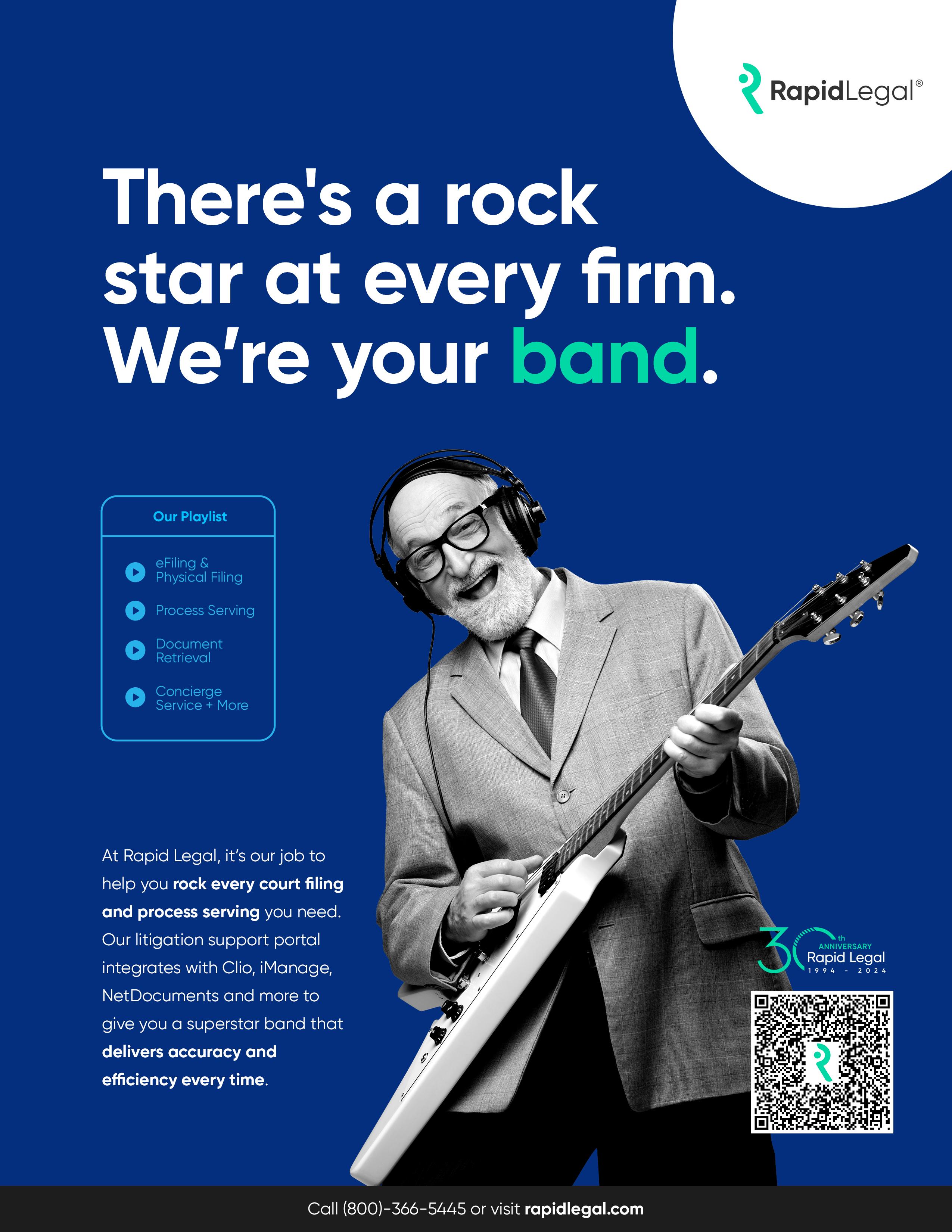


What other lawyers are saying about us:
'' After his accident, I referred Peter to Casey Gerry because he needed help from real lawyers. After they battled for him, they achieved the largest settlement in San Diego history against the U.S. government in a motor vehicle accident for $70 million dollars. I am so happy for Peter that I got him over to Casey Gerry. They made all the difference.
'' Before referring my clients to Casey Gerry, it was important to know that they understood the value and the serious brain injury case and could handle going up against the United States of America as a defendant. They agreed with me that it could be an 8-figure case and they followed through to make that happen. I'm glad for my clients that I made the decision to refer them to Casey Gerry."
ATTORNEY JOHN REENAN

ATTORNEY JONATHAN COLBY
'' When I selected a firm to work with me in representing the Tony Gwynn family against the dip tobacco industry, in this groundbreaking case, I needed a firm with gravitas, detailed knowledge of sophisticated legal doctrines, and the ability to take on one of the most challenging corporate entities in the United States. My decision was to select Casey Gerry for the Gwynn family, I'm glad I did. They were great to work with
ATTORNEY DON TREMBLAY


Serious Personal Injury Wrongful Death I E-commerce Product Liability I Automobile Accidents Spinal Cord Injury I Comp lex Litigation Product Liability I Traumatic Brain Injury I Aviation Litigation �� ....-- 1/ . � • ...... ,,r' � ,· ����
CALL US: (619)
648-1958
BE SOCIAL: CONNECT WITH US CASE RESULTS: 110 LAUREL ST. SAN DIEGO, CA 92101

The Better Way To Gain More Clients
The San Diego County Bar Association’s Lawyer Referral and Information Service (LRIS) connected over 60,000 qualified clients with participating attorneys in 2023, resulting in nearly eight million dollars in legal fees earned. You could be one of those attorneys in 2024.
The public trusts LRIS as the reliable way get connected with qualified attorneys. Lawyers trust LRIS too, because we carefully pre-screen potential clients to ensure we only send you referrals that match well with your practice area.
Practically speaking, LRIS offers you the most cost-effective way to gain high-quality clients, hands down. The cost is much lower than other marketing methods, including advertising, SEO, listing/rating services, you name it (lower still with the highly-discounted LRIS enrollment fee offered to SDCBA members — your membership will immediately pay for itself).
Best of all, by participating in LRIS, you will be helping clients access quality legal services they wouldn’t find otherwise — a true win-win.
Request your LRIS application: 619.321.4150 or LRIS@sdcba.org San Diego & Imperial Valley Counties
L AW YER REFERRAL & INFORMATION SERVICE
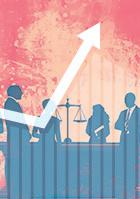


PRESIDENT'S COLUMN by Stacey A. Kartchner
LAW SCHOOL COLUMN
Changing Names and GenderMarkers and Transforming Lives by Elle Peterson
ETHICS
PRO BONO PUBLICO
Not Just the Public Benefits by Edward McIntyre
TECHNOLOGY
Tech Tips and Tidbits by Bill Kammer
BUSINESS
Pro Bono Practice and The Bottom Line by Edward McIntyre
THE REWIND:
The Case of the Traveling Gavel and the Wayward Judge by George W. Brewster Jr.
WHAT TO DO WHEN
You are Offered a Coveted Seat on the Board of Directors of an Important Nonprofit by Charles V. Berwanger
MEET YOUR BAR-ISTA Nicole Behar
Marketing Communications Manager
DISTINCTIONS AND PASSINGS
Community Members Honored and Remembered
GALLERY
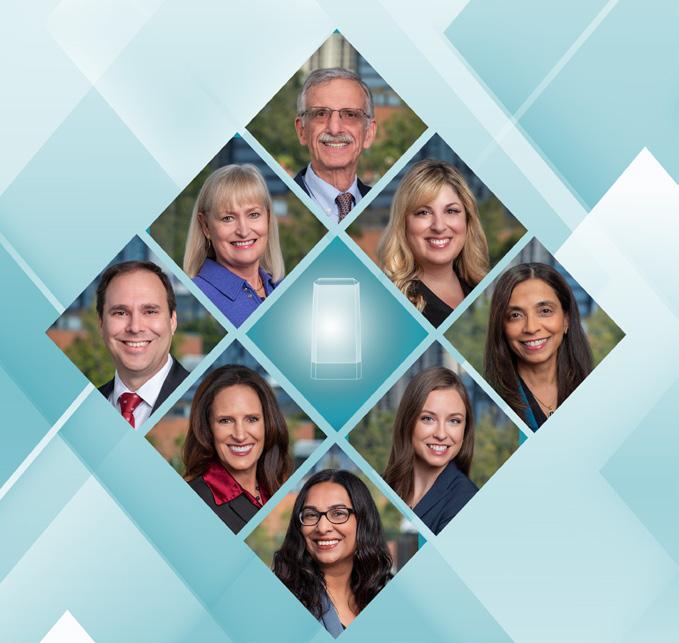
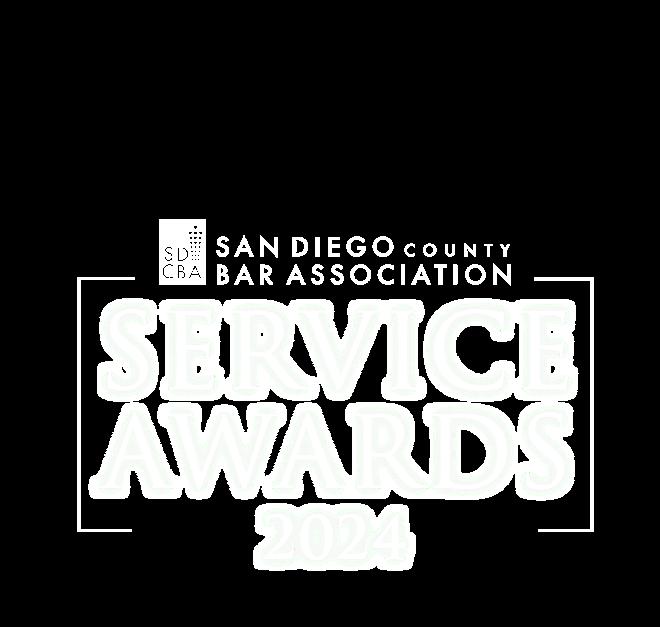
by George W. Brewster Jr.
Michael L. Crowley
OF LAW
WHY I LAWYER
12 14
by Alvin Gomez
PHOTO
20 19 11 32 23 31 43 16 8 Page 20 Page 32 Page 16 CALIFORNIA WESTERN SCHOOL OF LAW'S INNOCENCE CLINIC CHARTS A NEW COURSE by Vaani Chawla & Katelynn Robinson FREEING THE INNOCENT, ONE CASE AT A TIME by Jenn French 2024 SERVICE AWARD WINNERS NOT INVOLVED WITH HIGH SCHOOL MOCK TRIAL? YOU SHOULD BE! by Isaac Jackson JUDGE DAVID GILL
50
SAN DIEGO COUNTY BAR ASSOCIATION TIME CAPSULE
THE BACHLAWRETTE Dating De Novo Viewing Your New Relationship with Fresh Eyes (Unless It’s Your Ex) Page 25 35 39 45 46 Features 40 36 columns 25 SAN DIEGO LAWYER | May / June 2024 5
MARKS
by








Get started at lawpay.com/sdcba 866-730-4140 TOTAL: $1,500.00 New Case Reference **** **** **** 9995 *** Trust Payment IOLTA Deposit YOUR FIRM L OGO HERE PAY AT TO RNEY PO WE R ED BY 22% increase in cash flow with online payments Vetted and approved by all 50 state bars, 70+ local and specialty bars, the ABA, and the ALA 62% of bills sent online are paid in 24 hours Data based on an average of firm accounts receivables increases using online billing solutions. LawPay is a registered agent of Synovous Bank, Columbus, GA., Fifth Third Bank, N.A., Cincinnati, OH, and Wells Fargo Bank, N.A., Canadian Branch, Toronto, ON, Canada.
law
LawPay is a simple, secure solution
allows you to easily accept credit and eCheck payments online, in person, or through your favorite practice management tools. I love LawPay! I’m not sure why I waited so long to get it set up. – Law Firm in Ohio +
Trusted by 50,000
firms,
that
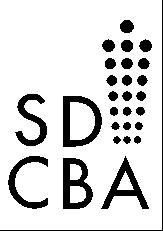
Issue no. 3. San Diego Lawyer® (ISSN: 1096-1887) is published bimonthly by the San Diego County Bar Association, 330 A Street, San Diego, CA 92101. Phone is (619) 231-0781.
The price of an annual subscription to members of the San Diego County Bar Association is included in their dues. Annual subscriptions to all others: $50. Single-copy price: $10.
Periodicals postage paid at San Diego, CA and additional mailing offices. POSTMASTER: Send address changes to San Diego Lawyer, 330 A Street, San Diego, CA 92101. Copyright ©2024 by the San Diego County Bar Association.
All rights reserved. Opinions expressed in San Diego Lawyer are those of the authors only and are not opinions of the SDCBA or the San Diego Lawyer Editorial Committee. In addition, information presented in this magazine is for educational purposes only and should not be construed as legal advice. For your specific questions, please seek advice from counsel.
Interested contributors may submit article ideas to the editors at www.sdcba.org/SDLidea for consideration. San Diego Lawyer reserves the right to edit all submissions, contributed articles, and photographs at its sole discretion.
330 A Street, San Diego, CA 92101
Phone (619) 231-0781 • bar@sdcba.org • www.sdcba.org
Co-Editors
Genevieve A. Suzuki Vaani Chawla
Editorial Committee
Victor Bianchini
George Brewster
Michael Crowley
Jodi Cleesattle
Jenn French
Rafael Hurtado
Isaac Jackson
Edward McIntyre
Kalli Sarkin
Wilson Schooley
Andrea Warren
SAN DIEGO COUNTY BAR ASSOCIATION
Board of Directors
President
Stacey A. Kartchner
President-Elect
Michelle A. Gastil
Immediate Past President
Melissa Johnson
Directors
Leslie Abrigo
Michael L. Crowley
Nicole D’Ambrogi
Jason Evans
Sarah Garrick
Nicole Heeder
Brandon Kimura
Secretary
Tatiana Kline
Treasurer
Spencer Scott
Flavio Nominati
Stephanie Pengilley
D. Elisabeth Silva
Cynthia L. Stratton
Timothy G. Williams
Fanny Yu
& Inclusion Division Representative Taneashia Morrell
New Lawyer Division Representative
Elijah Gaglio
SDCBA Staff — San Diego Lawyer
Dr. Crystal Trull Director of Marketing & Outreach
Ron Marcus
Senior Designer Attiba Royster
Nicole Behar
Content and
Interim Executive Director
Marketing Communications Manager
Publications Editor
Katelynn Robinson
SAN DIEGO LAWYER EDITORIAL COMMITTEE ® Issue
INDEX ADR 18 CaseyGerry 3 Charles Roseman Esq 9 JAMS 34 Judicate West 38 LawPay 6 Lawyer Referral & Information Service 4 Monty A McIntyre, Esq 43 OnPoint Mediation Services 17 RapidLegal 2 San Diego County Bar Foundation 42 Signature Resolution 24 University of San Diego 41 VanDeWeghe Dispute Resolution Services 15 West Coast Resolution Group (NCRC) 33
3, May/June 2024 ADVERTISERS
Diversity, Equity,
SAN DIEGO LAWYER | May / June 2024 7


PRESIDENT'S COLUMN BY STACEY A. KARTCHNER
Lawyers lead by example. They inspire colleagues, law students, and even clients to engage in acts of service. The acts can take many forms, including volunteering at local shelters, participating in legal clinics, judging mock trial competitions, or otherwise supporting social justice causes.
San Diego has a very special and collaborative legal community. The lawyers in our community work tirelessly on behalf of their clients, review mountains of documents, connect with other attorneys at legal community events, and passionately fight for justice. As ambassadors of our legal system, we help safeguard the rule of law, work to maintain the independence of the judiciary, and advocate for fairness and access to justice.
While this is impressive enough, at the end of the workday, most lawyers go home to another set of obligations ranging from helping children with homework, shuttling them to sports practices, assisting loved ones, tending to animals that need care, running errands, conducting home repairs, or engaging in a myriad of other things that take considerable time. Yet, despite all of these time demands, what is truly astonishing is how many lawyers give back to the community — in so many different ways, big and small, both highly visible and behind the scenes.
On May 14, 2024, we celebrated our amazing SDCBA Service Award winners. Their passion and dedication to different causes, as well as their commitment to a “calling” to give back to others is truly inspiring. This calling is an inherent part of our profession and is on display constantly.
This year, the following remarkable individuals were selected to be honored at our Annual Law Week Luncheon and Celebration of Community Service in these categories:
Outstanding Attorney — Charles M. Sevilla
Outstanding Jurist — Hon. Margaret Mann (Ret.)
Community Service — Deborah Dixon
Service to Diversity — Vaani Chawla
Service by a Public Attorney — Tracy Prior Service to the Legal Community — David Majchrzak
Service by a New Lawyer — Audrey Surridge
Distinguished Organization — Tariq Khamisa Foundation
In addition to these outstanding leaders, countless other San Diego lawyers truly make a meaningful difference in the lives of others in both their individual capacities and as a collective. Lawyers educate and contribute to the overall betterment of our community.
8 SAN DIEGO LAWYER | May / June 2024
Even small acts of kindness can be transformative, and I hope the spirit of service and collaboration continues to define San Diego’s legal community now and into the future.
If you are looking for ways to give back, our community offers a wide array of opportunities, including volunteering with the SDCBA. Whether it is serving as a Section or Committee leader or helping plan a CLE or networking event, you are providing an invaluable service. Our annual high school mock trial competition is only made possible through the time and talents of volunteer coaches, scorers, and judges. Additionally, we are able to support so many meaningful programs in our community, including beach clean-ups, Serving Seniors, Modest Means Program, Servicemember Civil Relief Act Pro Bono Program, Lawyer Referral and Information Service, and much more. I encourage you to review the “public service” section of the SDCBA’s website if you are looking to get more involved.
The selflessness and commitment of our volunteers form the bedrock of our collective success –– serving our community, helping those in need, and preserving access to justice for all.
Lawyers educate and contribute to the overall betterment of our community. Even small acts of kindness can be transformative, and I hope the spirit of service and collaboration continues to define San Diego’s legal community now and into the future.
I know I am not alone in expressing my admiration and gratitude for all you do, in ways big and small, to make our legal community one that we can all be proud to be a part of today.
Stacey A. Kartchner serves as SDCBA President and Senior Counsel at Klinedinst. Her practice is focused on criminal defense, professional licensing litigation, and professional liability defense. Ms. Kartchner is a past president of both the Criminal Defense Lawyers Club and the Criminal Defense Bar Association.

THANK YOU TO OUR PATRON & FRIEND MEMBERS
The SDCBA gratefully acknowledges the generous commitment of members who support our community at the Patron and Friend membership levels. You can become a Patron or Friend member when you activate or renew your membership online, or by request at any time. For more information about upgrading, please contact mbr@sdcba.org.
Patron and Friend member lists as of May 2024
PATR O N MEMBERS
Marc D. Adelman
Alicia Aquino
Danielle Patricia Barger
Hon. Victor E. Bianchini (Ret.)
Joshua A. Birdsill
Jedd E. Bogage
Tanisha Bostick
James A. Bush
Andy Cook
Steven T. Coopersmith
Ezekiel E. Cortez
Taylor Darcy
Warren K. Den
John A. Don
William O. Dougherty
Alexander Isaac Dychter
James J. Eischen Jr.
Matthew J. Faust
Sergio Feria
Nicholas J. Fox
James P. Frantz
Michelle Ann Gastil
Douglas A. Glass
Alvin M. Gomez
Stephen M. Hogan
Ted Holmquist
Emily Howe
A. Melissa Johnson
Stacey A. Kartchner
Carla B. Keehn
Laila Khosroabadi
Garrison "Bud" Klueck
Kevin Timothy May
Hon. William McCurine, Jr.
Jillian M. Minter
Virginia C. Nelson
Deborah A. Ortega
Anthony J. Passante
Frank J. Polek
Kristin Rizzo
Ana M. Sambold
Seana Kelly Scholtemeyer
Khodadad Darius Sharif
Elisabeth Silva
David G. Sizemore
Christopher J. Sunnen
Genevieve A. Suzuki
Cassandra C. Thorson
Bill VanDeWeghe
Thomas J. Warwick
Lenden F. Webb
Jon Webster
Daniel Weiner
Andrew H. Wilensky
Timothy G. Williams
Karen M. ZoBell
FRIEND MEMBERS
Pedro Bernal Bilse
James Gregory Boyd
Linda Cianciolo
Susanne de la Flor
David B. Dugan
Robert F. Egenolf
Mark Kaufman
Randall E. Kay
Ellisabeth "Lis" Logans
Philip John Mauriello
Valeria Medina
Anne Perry
Kristi E. Pfister
Michelle L. Silva
Hon. Stephanie Sontag
Peter B. Tentler
Michael A. Van Horne
10 SAN DIEGO LAWYER | May / June 2024
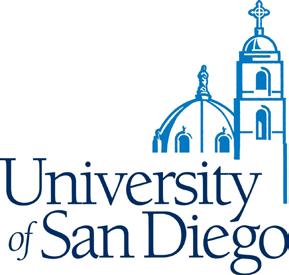
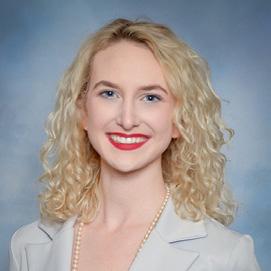
TCHANGING NAMES AND GENDER-MARKERS AND TRANSFORMING LIVES
he University of San Diego School of Law’s Name and Gender-Marker Change Clinic helps transgender and gender-nonconforming Californians update their name and/or gender-marker to reflect their true identity. Those who have volunteered with us have seen our organization’s profound impact on the lives of LGBTQ+ individuals in our community. Our clinic stands as a beacon of hope and support for people navigating the intricate legal procedures involved in changing their name and gender-marker.
While seemingly straightforward, the process to change names and gender-markers is riddled with complexities. It entails navigating a maze of court forms, which vary depending on age and parental affirmation, followed by a lengthy waiting period and subsequent coordination with multiple government agencies. The sheer magnitude of these steps can overwhelm those unfamiliar with the process, underscoring our clinic’s vital role in facilitating this journey.
At the clinic, we recognize the multifaceted significance of these legal changes. Beyond mere paperwork, they represent a profound affirmation of identity, fostering a sense of belonging and empowerment. Yet, the legal system’s intricacies often pose barriers, particularly for individuals lacking legal expertise. Our clinic endeavors to bridge this gap by offering comprehensive support from compassionate law students who guide clients through each stage with empathy, knowledge of the legal process, and a recognition of the lived experiences of our clients. We understand that changing one’s name and gendermarker is an affirmation of identity and a powerful act of
We want to hear from you.
self-determination. Our team of law students, many of whom identify as LGBTQ+ themselves, create a safe and welcoming space for participants to express their needs and concerns.
Our work at the clinic is a testament to the power of compassion, education, and advocacy. We facilitate legal change and promote awareness within the broader community. Through our outreach efforts, we seek to educate the public about the challenges faced by transgender and nonbinary individuals. We advocate for systemic changes that make the name and gender-marker change process more accessible and equitable. We play a crucial role in supporting and empowering transgender and nonbinary individuals as they navigate the legal name and gender-marker change process. We recognize that this process can be complex, emotionally charged, and challenging. We are here to provide the guidance, support, and advocacy needed to ensure that everyone can live as their authentic selves. Our work is not only about changing paperwork; it is about changing lives, fostering inclusion, and creating a more equitable society for all.
If you or a person you know is ready to start this process, please email us at transclinic.sandiego@gmail.com, and stay up to date on Instagram @usdtransclinic.
Elle Peterson is the current Clinic Outreach Coordinator. She formerly served as Vice President of USD Pride Law and as a member of the DEI Student Advisory Committee, advocating for underserved members of the law student community. She will be graduating from USD School of Law in May 2024.
San Diego Lawyer welcomes article submissions from practicing attorneys and industry experts on various lawrelated topics. Interested contributors can view guidelines and submit their ideas using the form at www.sdcba.org/ SDLidea. We also highly encourage the participation of diverse authors, including (but not limited to) people who have less than five years of legal practice, women, people of color, people with disabilities, and people who identify as LGBTQ+. Please read posted submission criteria carefully. Publication cannot be guaranteed, but the SDCBA appreciates and will consider all article submissions.
By Elle Peterson
LAW SCHOOL COLUMN
SAN DIEGO LAWYER | May / June 2024 11
ETHICS BY EDWARD McINTYRE
A recurring series where fictional characters discuss real ethics scenarios Macbeth, a long-recognized expert in legal ethics, professional responsibility, and the law of lawyering is joined by his nephew Duncan and Sara, the very bright newest member of the firm
PRO BONO PUBLICO NOT JUST THE PUBLIC BENEFITS
Macbeth had lunch with Errol, a long-time friend. After the small talk, Errol shifted the conversation.
“Macbeth, I’m at that point where I want to step back. Tired of the grind. Tired of constant demands. But I love the practice. Don’t want to walk away. But I don’t know where to turn. Thoughts?”
“My friend, after a long and most distinguished career, you’ve got immense experience and talent. And you love the law. I understand not wanting to quit.”
“I agree. I love the law.”
“I understand how the demands of your practice can be wearying. I’ve got something you might consider.”
“Please. Go on.”
“What do you know about the State Bar’s ‘Pro Bono Practice Program’?”
“Nothing. What’s it about?”
“You may find it interesting.”
“Tell me.”
“The program provides opportunities for retired lawyers. And lawyers who want to take a break from active practice. They engage in assisting low-income Californians on a pro bono basis.”
“Never heard of it.”
“It’s a program for active lawyers who would otherwise be

inactive. So, you’d maintain your ‘active’ state bar status. Lawyers in the program provide free legal assistance exclusively for a qualified legal services provider. There’s a broad range of qualified programs.”
“OK. What’s required?”
“You must be a lawyer in good standing. No disciplinary charges pending when you apply. No record of public discipline for the three years before applying. You’re good there.”
“Yes. Fortunately, the state bar has never come calling.”
You have to be admitted for at least three years when you apply. And have practiced at least three of the last five years. Think you’re good.”
“Forty years. Does it show?”
“Not in the least.”
“What else?”
“You file an application. Annually. Then, when the state bar certifies you as a pro bono practice lawyer, you provide legal assistance exclusively as a pro bono lawyer. You can’t engage in other activities that require active status.”
“OK.”
“Lawyers in the program work with a qualified legal service provider. You can’t accept any compensation for any services you provide. But you can accept expense reimbursement.”
12 SAN DIEGO LAWYER | May / June 2024
Illustration by George W. Brewster Jr.
“OK. What else?”
“You agree with the provider to give a minimum number of pro bono hours annually. One hundred is a recommended minimum. But there’s no absolute requirement.”
“Annually?”
“Think you can hack it?”
“Times 10. That’d be a vacation.”
“In return, the state bar waives your annual license fee. Malpractice coverage is generally available from most providers. Also, practitioners get free or discounted MCLE programs.”
“What would I be doing?”
“Great question. Pretty much anything you’d like. Opportunities vary, depending on the needs of a particular client community.”
“Of course.”
“Lawyers in the program can provide representation — full or limited scope. Or negotiate and settle disputes, do screening and intake. They provide service by phone or in person; do document preparation and review; mentor and train less experienced staff; do legal research and writing; litigation support; legislative research and legal analysis. It’s a broad spectrum.”
“It sounds like I could write my own ticket.”
“From what I can tell, yes. Obviously, it depends on the service provider and its clients. But you can engage with more than one service provider to get a broader range of experience.”
“If I get into the program, can I get out? Or is it a life sentence?”
“No. With notice to the state bar and some other requirements, a lawyer can withdraw from the program.”
“Anything else I should know?”
“Well, besides allowing you to continue to pursue your passion for the practice — without all its demands and at your own pace — you’ll deliver critically needed legal services to some of the most vulnerable populations in California.”
“Not a bad way to finish my career. I’ll give it serious consideration. Talk it over with Chris. With my partners.”
“Let me know how I can help.”
“You already have, my friend.”
Editor’s Note: A description of the Pro Bono Practice Program and its requirements are at State Bar Rule 3.325, et seq.

Edward McIntyre (edmcintyre@ethicsguru.law) is a professional responsibility lawyer.

GOT A LEGAL ETHICS QUESTION?
(619) 231-0781 x4145
The SDCBA Legal Ethics committee is here to help! SDCBA members can call our Legal Ethics Hotline* for guidance and perspective on a variety of ethical considerations in the practice of law. Your call will be taken by a seasoned attorney with significant experience in legal ethics issues. Simply call the hotline and leave a message with your phone number, your question, and any context you can provide that can help our attorneys research your question before responding. One of our Legal Ethics Committee members will call you back to discuss your question with you.
*Before calling, please read the following disclosure: https://www.sdcba.org/docDownload/47105.
CALL THE LEGAL ETHICS HOTLINE:
Artificial Intelligence Report of the NYSBA
In April, the New York State Bar Association issued its recommendations from its Task Force on Artificial Intelligence. The 92-page report contains valuable sections on the evolution of AI and generative AI (GenAI); the benefits and risks of AI and GenAI; and the impacts of those procedures on the legal profession. This valuable resource is at https://nysba. org/app/uploads/2022/03/2024-April-Report-andRecommendations-of-the-Task-Force-on-ArtificialIntelligence.pdf
Legal Buyers Beware: AI Washing
If you are a sports fan, you may have seen the term “sportswashing.” It describes efforts by nations and other actors to improve their reputations by investing in sports teams and sponsorships of sporting events. In the legal profession, we are now entering the era of AI washing. Though not new to our profession, there is more frequent discussion now because of the excitement about large language models and AI tools such as ChatGPT. To some, AI washing means businesses making unfounded AI claims to the public. A perfect example of the genre would be a “ChatGPT wrapper,” a vendor’s repackaging of older technology around ChatGPT without adding real value to the vendor’s product.
The challenge will be to avoid falling for AI washing when companies exaggerate the level of AI in their products and services. In 2023, the FTC warned vendors to stop lying about their AI. More recently, the SEC has warned that AI washing can break securities laws, mislead consumers, and harm investors. Discover more about these developments, efforts, and risks at https://www.law.com/ legaltechnews/2024/03/15/not-generative-ai-investorscustomers-call-out-legal-techs-ai-washing and https:// www.ftc.gov/business-guidance/blog/2023/02/keep-yourai-claims-check
TECHNOLOGY
BY BILL KAMMER
TECH TIPS AND TIDBITS
The Quality and Threat of Deep Fakes
The TV series “Hill Street Blues” usually concluded its rollcall meetings with the admonition of the precinct sergeant: “Let’s be careful out there.” That is the current situation because of AI and generative AI’s ability to produce fake audio and video segments. As the quality of those tools improves, the task of detecting them and stopping their evidentiary misuses will become progressively more difficult. Forensic professionals may not find that difficult. However, lawyers who receive exhibits, audio recordings, or video clips during discovery or at trial may lack the expertise to distinguish between truth and falsehood.
One example of the challenges presented is Microsoft’s recent launch of VASA, an AI model that can generate realistic videos of talking human faces. The tool only requires a single image and a brief speech clip to produce a persuasive fake. Attorney Greg Bufithis has penned an informative article titled “We Are Doomed.” https:// conta.cc/49FXqGj His article alarmed the eDiscovery commentator Doug Austin and provoked him to research and locate resources to help people learn how to spot deep fakes. https://ediscoverytoday.com/2024/04/18/ resources-for-learning-how-to-spot-deepfakes-artificialintelligence-trends/
Preserving Ephemeral Messaging
Microsoft Teams, Slack, and Signal are among the collaboration tools and messaging applications used by legal professionals and their clients. In the early days of electronic discovery, the obligation to preserve documents and data that might be relevant and admissible was not difficult to implement. Given sufficient investigation and guidance, hard copies and digital data were relatively easy to collect, isolate, and protect from destruction. However, discovery has progressed to the stage where that obligation extends to mobile device data, collaboration data, and ephemeral messages. All those sources potentially contain information that requires timely
14 SAN DIEGO LAWYER | May / June 2024
preservation and collection. The challenge is obvious enough that the Justice Department and the Federal Trade Commission have each updated the language in their standard preservation letters and specifications for responses. They now instruct the recipients to address the preservation of those materials. You can read more about these developments at https://www.justice.gov/ opa/pr/justice-department-and-ftc-update-guidancereinforces-parties-preservation-obligations and https:// www.ftc.gov/news-events/news/press-releases/2024/01/ ftc-doj-update-guidance-reinforces-parties-preservationobligations-collaboration-tools-ephemeral. You can also find the model FTC request at https://www.ftc. gov/system/files/ftc_gov/pdf/Final-Rev-Model-SecondRequest-01-26-2024.pdf
The Challenges of Modern “Linked Attachments”
In the early days of electronic discovery, issues arose when ESI, such as emails, referred to attached documents, such as those generated by Microsoft Office applications. When collecting and producing those documents, the challenges to both the producing and responding parties arose. Parties then developed techniques to preserve the operable attachments and relate them to the primary documents being produced (“the parent and the child”).
The techniques once used to address those problems may no longer be effective when dealing with modern reference methods. Perhaps “linked attachments” is no longer an apt description for hyperlinked documents often stored in cloud repositories and on document servers. Those are referenced only by a link in the transmitting message that refers to a version of the reference existent at the time of transmission. The link may not reference a file per se but simply a link to databases or structured data.
Problems related to the preservation, collection, and production of hyperlinked documents are more complex than this simple paragraph can discuss. However, a sample of those problems would include questions such as: Is this link broken? Was this the version that existed at the time of the email? Is that version currently available for production from another source? Does the cloud repository or the document server still contain any version of the hyperlinked attachment? As you might suspect, Craig Ball has written at length on the subject, and you can begin with his article, “What’s all the Fuss About Linked Attachments?” https://craigball.net/2024/03/29/whats-allthe-fuss-about-linked-attachments
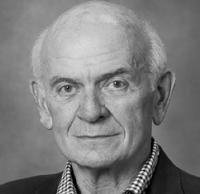
Bill Kammer (wkammer@swsslaw.com) is a partner with Solomon Ward Seidenwurm & Smith, LLP.
Mediation for Complex Business Disputes

When your client has:
• A difficult employment claim,
• A conflict between a board and its executive team,
• Disagreements among owners or companies,
• Unsatisfied investors,
• Problems between a lender and a borrower,
...or other similar disputes that arise, your mediator should understand litigation and business.
Seasoned Litigator and Business Leader Bill VanDeWeghe Let’s talk. V VanDeWeghe Dispute Resolution Services www.vdwmediation.com

BUSINESS OF
LAW
by EDWARD McINTYRE
PRO BONO PRACTICE AND THE BOTTOM LINE
The State Bar aspirationally encourages lawyers to devote time and resources to pro bono activity. Its rationale is to ensure that those who can't afford adequate legal representation have equal access to the justice system. The State Bar even enshrines that ideal in the rules. "In meeting this responsibility of the profession, every lawyer should aspire to render at least fifty hours of pro bono publico legal service per year."1
How do overburdened lawyers meet the increasing demands on their time that clients impose, that firm management mandates, that making a living dictates, and that having some semblance of life requires — while volunteering for pro bono representations?
How do firms' senior lawyers and managers justify 50 billable hours of every lawyer's time devoted to nonclient work — when the practice continues to extract even more from lawyers?
Perhaps the answer is doing what we suggest to clients facing difficult choices: balance benefits against drawbacks.
The drawbacks? They're obvious: Less time to devote to client work, developing a practice, or quality-of-life pursuits. The benefits? They fall into two categories: benefits for lawyers themselves and for their firms.
For lawyers, especially younger lawyers, the first and perhaps most obvious benefit is the sense of personal and professional satisfaction that comes from contributing to solving an increasingly unmet need for legal services. Nonprofit organizations and legal service
agencies simply cannot keep up with the demand. As members of a highly selective profession, we can experience the sense of pride that comes from helping meet a need that only we can. Well-motivated members of the public cannot do what we uniquely can and are trained to do — practice law. If our profession is going to meet this demand, private law firms and corporate legal departments must fill the gaps so everyone's legal needs are met.
However, there are more tangible professional benefits. Within medium-sized and large law firms, pro bono activity provides a unique opportunity to develop lawyering skills — early in a career — that a firm may not be able to provide at that stage:
1. Taking depositions
2. Getting into court
3. Learning to negotiate
4. Communicating with clients, all with greater autonomy over the matters on which the lawyer works
Building such an expanded skill set and professional network is also important for future professional mobility — lawyers frequently change jobs throughout their careers, now more than ever. Working on pro bono cases may give a lawyer the edge in chasing the job of their dreams while standing just a bit taller in their current firms.
16 SAN DIEGO LAWYER | May / June 2024
But, the benefits go beyond medium-sized and larger firms. Smaller firm lawyers and solo practitioners doing pro bono work develop new skills, acquire expertise, receive invaluable mentoring, and have the opportunity to network with other similarly committed lawyers in the community. In addition, pro bono providers frequently offer MCLE training at little or no cost.
How do law firms benefit? By recruiting talent and by acquiring and retaining clients.
Annual law firm rankings — see, e.g., The American Lawyer — rate pro bono opportunities among the criteria they list. 2 Talented law students and young lawyers pay attention to those rankings when considering employment opportunities. Pro bono opportunities attract talent.
Corporate clients are also interested in evidence of their lawyers' corporate social responsibility. Law firms tout their lawyers' pro bono contributions for a reason: they enhance the firm's profile for existing and prospective clients, as well as the general public.
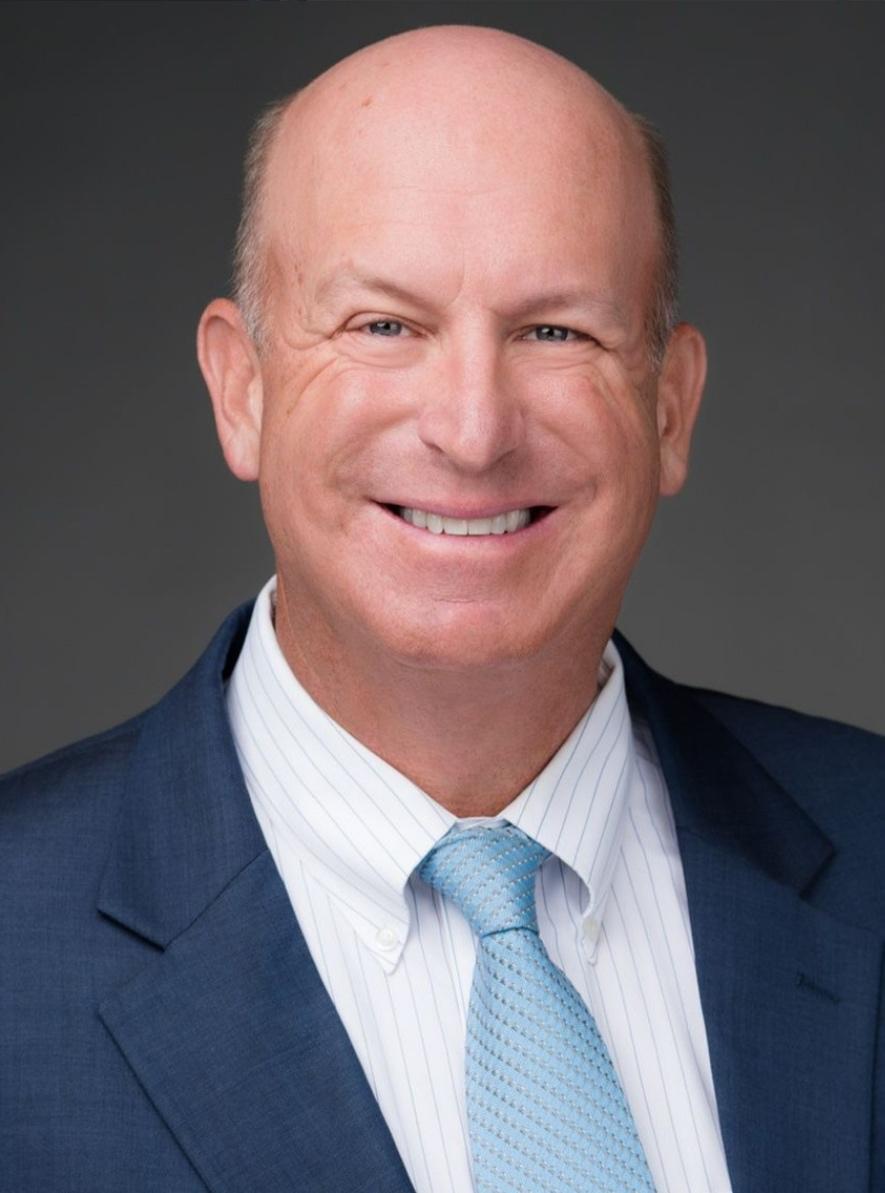
Moreover, by allowing younger lawyers pro bono opportunities, firms reap the benefits of newer lawyers learning how to effectively network, develop confidence, acquire leadership experience, and gain transactional, negotiation, or trial experience early in their careers while having the opportunity to branch out into another area of law. Not only are such opportunities invaluable, but they're not always available early in a lawyer's career.
In short, pro bono lawyering pays.

Edward McIntyre (edmcintyre@ethicsguru.law) is a professional responsibility lawyer.
1. Rules of Professional Conduct, rule 1.0 Comment [5]
2. See, e.g., "Pro Bono Scorecard: National Rankings;" see also Vault Law 100, which ranks firms based on associate surveys.
Michael McGowan has over 20 years of experience settling highprofile litigation Let him resolve your case with the efficiency and creativity you would expect from a seasoned cour troom attorney
Areas of Specialty include:
• Government/municipal liability
• Personal Injury
• Employment Discrimination

L i t i g at i o n c a n b e ro u g h . S e t t l i ng m ay b e e a s i e r t h a n yo u t h i n k . 619-365-9222 | mmc gowanlaw@protonmail.c om w w w. o n p o i nt me d i at i o n . ne t
Michael McGowan



IWhy I Lawyer
ALVIN GOMEZ
always say that each person has a story that helps us understand who they are. My story started when I was born in the city of Barstow to incredible parents. While their formal education ended after the seventh grade, they were wise beyond their “book knowledge.” When I graduated from Barstow High School in 1981, the fouryear college attendance rate was less than 3% among graduating seniors. I was fortunate to have been helped by so many people in my life. Because of this, I was able to not only attend the University of California, San Diego, but also attend law school and achieve my goal of becoming a lawyer.
When I was in fifth grade, my dad was diagnosed with mental illness and placed on disability. Our family had no choice but to move to the projects and accept government assistance. It was a humbling experience but necessary for our survival. My dad’s illness and living in the projects helped me develop a thick skin that would be necessary to become the first in my family to go to a four-year university, the first to go to law school, and the first to ultimately become a lawyer.
In my pursuits, I had so much help along the way. That help came from my parents, parents of my childhood friends, college friends, and mentors. At one point, I was asked “Why are you applying to law school?” and was told “You will never make it.” Rather than accept the negative comment, I used those words to fuel and push me harder and harder to achieve my goals.
In my first weeks of law school, I told my professor that I needed a job because my family relied on me. She told me, “You can’t work your first year of law school.” I reiterated my need to work, and she referred me to an attorney, Anthony “Tony” Mournian, who was a sole practitioner and plaintiff’s personal injury lawyer. I met with him, and he offered me a job as an investigator. Around the same time, I was offered a job with a prestigious defense firm. That’s when I realized I wanted to represent individuals who were hurt through the fault of another. Tony recommended me to three other attorneys for additional work. Tony’s help and mentorship helped me realize that I wanted to mentor others in the profession.
As my career evolved as a trial attorney in personal injury, criminal defense, civil rights, and mass and class actions, I realized that my next phase would be to give back. I observed fellow attorneys serving on nonprofit boards, school read-ins, legal associations, as well as volunteering to provide pro bono legal services. Because I had an amazing mentor, I decided that I, too, wanted to serve as a mentor. Over the past 35 years, I have mentored over 50 young lawyers, served on many boards, provided pro bono services, and in 2023 I started a scholarship to help firstgeneration college students.
The scholarship fund, A Gomez Scholarship Inc., gives scholarships totaling $100,000 per year for 10 years to Barstow High School and Oceanside High School students. In its first year, my scholarship fund awarded over $132,000 in scholarships ranging from individual awards of $2,500 to $27,000. Each scholarship applicant submits a two-to-three-minute video sharing their life story.
Every story that has been submitted for the scholarship has been heartwarming, compelling, and representative of their struggles. Each story made me realize this person is just like me when I was their age. Being able to give back has made me realize that now, my life really has come full circle.
Those who helped me instilled in me the desire to help others. Coaching the Oceanside High School mock trial team has inspired me to do more to give back. In 2022, I started taking my team, fellow coaches, and teachers to Washington, D.C. This is the third year I have sponsored the trip. Most of “my kids” have never been out of California, let alone across the country. It is amazing to observe and listen to “my kids” as they see the amazing sites in Washington, D.C. They are so grateful, and their joy has made me realize that giving is what makes me the happiest.
Alvin Gomez has been a Plaintiff's trial lawyer for 36 years with over 60 trials (civil and criminal) who currently focuses primarily on class and mass actions in labor and consumer law throughout California
SAN DIEGO LAWYER | May / June 2024 19

CALIFORNIA WESTERN SCHOOL OF LAW'S INNOCENCE CLINIC CHARTS A NEW COURSE
by Vaani Chawla & Katelynn Robinson
Imagine you are a young adult accused of a crime you did not commit. A jury finds you guilty of the crime, and you are sentenced to spend most of your life in jail. Years, or even decades, pass as you sit in a small cell, and life within prison walls gradually changes you until you no longer recognize the person you once were. This might sound unlikely, but there are approximately 20,000 wrongfully convicted people experiencing this nightmare in American prisons today.
In an attempt to chip away at this problem, a few public interest lawyers around the nation have created programs to provide post-conviction relief to incarcerated innocent people. Since 1999, San Diego has been home to one of them, the California Innocence Project (CIP).
CIP began when attorney Justin Brooks, represented a 21-year-old woman who was sentenced to death on a plea bargain. Brooks was a professor at California Western School of Law (CWSL) and believed in her innocence. He commissioned a team of students to conduct research in support of a writ of habeas corpus. Brooks and his team won, and the woman was released from prison. This case inspired Brooks to establish the CIP, and the California Western School of Law began offering students the opportunity to participate in the CIP as a clinical program. Over the years, CIP students have benefitted from hands-on legal training, developed critical thinking skills, and learned about criminal justice reform.
Attorney Michael Semanchik, formerly of CWSL's CIP program, is currently the Executive Director of The Innocence Center. He explains that when innocence work began in the 1990s, students were vital participants in the post-conviction relief process. Semanchik said that students would "go out in the field, go out to the prison and interview
their client, track down witnesses, and try to see if there was any evidence of innocence that they could come up with."
Over the years, Semanchik said, funding for innocence work increased, and the need for student volunteers decreased. But, he maintained, there is value in shaping young lawyers.
The CIP program drew law school applicants to CWSL, and many decided to attend the school, hoping to participate in the clinic. 3L Hunter Rohde interned at the CIP as an undergraduate at the University of San Diego. After applying to law school, Rohde "was going to make USD work, but after that experience at the California Innocence Project, [she] thought Cal Western was a really awesome option."
"Without the CIP experience, I would have ended up at USD," Rohde said.
CWSL students report that participation in the CIP enhanced their educational experience and their credentials. 2L Meenal Patel found that her experience working at a law firm did not provide the depth of experience that the CIP offered. As a CIP participant, Patel said she prepared weekly memos and presentations and participated in deciding whether a potential client had a viable case. Patel felt like a valued member of the team. "The attorneys took into account what I really thought," Patel said. She also learned about the need for reforms. "[CIP] shows you that our system needs a lot of revamping. . . you can see that mistakes have been made. . . little things that were overlooked that change the trajectory of someone's life. It raises a lot of questions." Patel was deeply moved after meeting a person who was exonerated. "To see how much life they lost…it is important to mitigate those mistakes," Patel said.
Rohde agreed, saying, "Above all else, you . . . get to help people who are . . . at the end of the line in terms of hope
20 SAN DIEGO LAWYER | May / June 2024
and the ability to help themselves." Rohde also described how her CIP experience impacted her job search. "I was asked about the Innocence Project on every single [job] interview I had," Rohde said. "It looks good [on a resume] because you are getting an opportunity that you don't get anywhere else."
By 2023, CIP students and attorneys had filed writs of habeas corpus, resulting in 40 innocent people returning to life outside the correctional system. The CIP program was thriving.
In May 2023, things began to change. Brooks transitioned to a staff position at the University of San Diego, and several other staff members moved on from the CIP.
Shortly thereafter, CWSL made headlines. The headlines caused confusion about the status of the program, but CWSL maintains that its innocence work never "shut down." CWSL President and Dean Sean M. Scott explained, "It is a clinical program at CWSL and can only be shuttered by the law school or its accrediting body, the American Bar Association ('ABA'). Neither the law school nor the ABA 'shut down' the program."
The school also lost permission to use the "Innocence Project" name, raising questions.
Dean Scott responded, "Some, but not all, organizations engaged in innocence work chose to use the phrase 'Innocence Project' in their name. Use of the phrase requires a license from the national Innocence Project." According to Dean Scott, the school lost the license to use the name due to a lack of staff and a faculty director, but the school is committed to continuing its innocence work.
Students were distressed about the uncertainty. Patel remembers that her fall 2023 CIP experience started off well, but that changed in November. Patel said, "That is when things were getting chaotic. We weren't aware of what was happening with the project." Rohde agreed, stating, "We didn't really understand why the decision to slow the project down was being made."
Roque, a 1L who aspires to do post-conviction innocence work after she graduates, enrolled at CWSL because of the CIP program. She eagerly applied to participate in the program and was in touch with some of its leaders. Like others, when the news broke, she thought CIP was closing. Roque said she was "in complete shock" and felt "robbed of an opportunity."
"Above all else, you … get to help people who are … at the end of the line in terms of hope and the ability to help themselves."
– Hunter Rohde 3L
"It broke my heart," Roque said.
Some students were troubled about the academic impacts of the suspension. Patel explained, "We didn't know how to plan out our course schedule. It led to a lot of confusion for us." Had she known about the changes in advance, Patel said she "would have applied to a lot more places for internships in the spring . . . [she] missed opportunities and was limited in what [she] could apply for." Rohde was concerned about registering for enough credits.
To lead CIP through a transition period, CWSL selected Alissa Bjerkhoel as CIP Interim Director. Soon after Bjerkhoel was selected, Governor Gavin Newsom appointed her to a position on the bench, again leaving the CIP without a director.
Without anyone to lead CIP, California Innocence Advocates (Cal-IA) and Professor Megan Baca stepped forward to offer a solution. Baca founded Cal-IA, staffed by experienced innocence attorneys who formerly led an innocence clinic at Loyola Law School in Los Angeles. CalIA differs from other California Innocence organizations in that it maintains a small caseload with the aim of resolving cases more quickly and giving incarcerated clients' cases the attention they deserve.
Baca said that Cal-IA contacted CWSL and created a partnership to "sort through the cases and contact clients and potential clients to bring some clarity to the changes." In January 2024, Baca took on the role of Interim Director. "We are grateful," Dean Scott said, "Professor Baca has already engaged CWSL students in ongoing innocence work." According to Baca, progress has been made. "In the past three months, we have done an initial review of nearly 1,000 cases and contacted each incarcerated individual. We have narrowed these cases to approximately 300 qualifying cases and approximately 20 priority cases."
SAN DIEGO LAWYER | May / June 2024 21
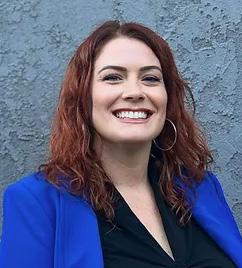

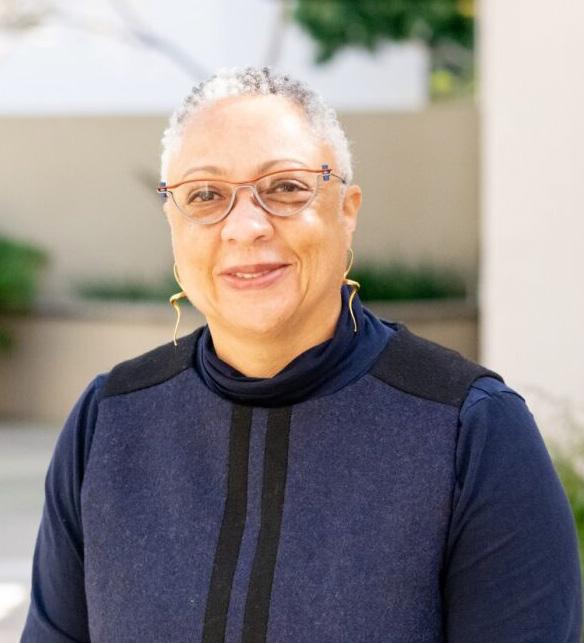
In fact, as recently as April 4, 2024, the CWSL/Cal-IA partnership helped Wesner Charles, Jr., who spent 22 years in prison for a crime he did not commit, regain his freedom.
Under Baca's leadership, CWSL will offer its innocence clinic to students during the summer for the first time. Baca described the proposed program experience as follows: "Students will partake in case evaluations, filing and arguing motions in court, investigation, drafting of petitions for writ of habeas corpus, litigation, and assisting the clients with re-entry efforts."
CWSL's innocence work will continue to evolve, giving students the benefit of real-life experience. Professor Amy Kimpel will start leading the CIP program in July 2024. Kimpel has over 14 years of experience in the criminal defense arena. She worked in California for many years, including as a federal defender and at the Judicial Council of California in the Criminal Justice Services Office. For the last five years, she has been leading a criminal defense clinic at the University of Alabama School of Law.
Dean Scott expressed confidence in Kimpel, stating, "Professor Kimpel will provide exemplary leadership to help us better serve our primary mission of educating law students. And, of course, the clinic will continue its legal work to free those who have been wrongfully convicted, involving law students every step of the way." Scott noted, "Staff and faculty changes are an inevitable part of life at any law school or institution of higher education. While the faces may look different, the important innocence work we are doing will continue."
Kimpel says she enjoys the dual role of practicing law and training new attorneys. Looking forward to her position at CWSL, Kimpel said she plans to meet with Brooks and others who built up the CIP practice and community of volunteers when she arrives.
Students have raised concerns about reducing the number of cases the clinic will process. "It isn't the number of cases; it is the quality of those experiences," Kimpel responded, "How much ownership do you have over an investigation and a hearing and a motion?" She said, "[Students] will draft the motions, and I will give feedback. I think you learn more by being in the driver's seat, . . . I am looking to my students to direct litigation, obviously with supervision. I want to provide … opportunities to take ownership. You can have more experience regardless of the volume."
Kimpel is excited about returning to California. She plans to share her passion for representing defendants and training law students. She says what she enjoys most about being a clinic professor is "be[ing] there to see [students] develop skills as a lawyer. To see them as they have those first victories. When they help draft a motion that helped free someone, it is pretty powerful."
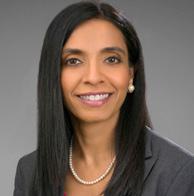
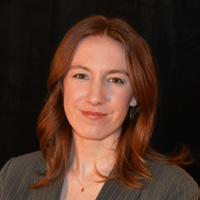
Vaani Chawla (vchawla@chawlalaw.com) practices immigration law and serves as Of
Katelynn Robinson (krobinson@sdcba.org) is the Content and Publications Editor for the SDCBA.
Counsel at Berner Chawla, PLLC.
L to R: CWSL Professor Megan Baca, University of Alabama Professor Amy Kimpel, CWSL Dean Sean M. Scott
22 SAN DIEGO LAWYER | May / June 2024

OFREEING THE INNOCENT, ONE CASE AT A TIME
By Jenn French
n March 11, 2024, The Innocence Center and the Los Angeles District Attorney’s Office filed a joint habeas petition and motion for finding of factual innocence on behalf of Stephen Patterson. Just two days later, Patterson was exonerated after spending 18 years — half his life — in prison for a murder he didn’t commit. This is the reason why The Innocence Center exists: cases like Patterson’s and so many more that need all the help they can get.
Michael Semanchik and Jasmin Harris started The Innocence Center on Aug. 1, 2023. Semanchik has dedicated his entire legal career to vindicating the innocent. He began working with the California Innocence Project (CIP) as a student at California Western School of Law (CWSL) in 2008 and went straight to CIP after graduating in 2010. After parting ways with CWSL, Semanchik and Harris wanted to focus on helping as many people as possible. And in less than a year, they’ve tripled their staff.
On Nov. 8, 2023, The Innocence Center filed its paperwork to join the Innocence Network as a full member. The Innocence Network is a collection of innocence organizations offering pro bono assistance to incarcerated individuals claiming innocence. This affiliation allows The Innocence Center attorneys to collaborate with colleagues across the country who focus solely on this very nuanced area of law, a core tenet being that members do not accept pay from clients and all work is done pro bono. There are nearly 65 member organizations and several hundred litigators devoted to innocence work. Since opening its doors in August, The Innocence Center has focused on securing grant money and fundraising to hire the exceptional staff attorneys from their former team.
After CIP paused, many clients chose to follow Semanchik to The Innocence Center. Innocence cases have a long life, and it can take years to investigate and present the evidence necessary to win a case. Stephen Patterson was one of those cases. In 2005, Patterson was wrongfully convicted of murder based on the testimony of a single eyewitness. Semanchik began working on Patterson’s case in 2013, which they initially had to close due to lack of evidence sufficient to reverse the conviction. In the
spring of 2022, Patterson hired a private investigator who discovered evidence that undermined the sole eyewitness’s testimony. Semanchik reopened the case, and they began reinterviewing witnesses. Semanchik and his team presented the new evidence to the Los Angeles District Attorney’s Conviction Integrity Unit. Their investigation confirmed what Semanchik had already found: each witness unanimously said that Patterson was in his front yard when the two perpetrators ran by immediately after the shooting.
The sheer number of wrongful convictions is staggering; Patterson was the 3,785th exoneration in the United States since 1989. But Semanchik reminds us that Patterson is “more than a number…half his life was taken from him.”
In addition to legal work, The Innocence Center is focused on assisting clients with reentry and is actively seeking funding to do so. Support comes in many forms: financial support, housing, access to therapy, employment assistance, and job training. Many individuals leave prison with post-traumatic stress disorder or, like Patterson, went to prison before they began to train and build a career. Clients also need assistance managing the compensation owed to them by the State of California as wrongfully convicted people.
“We can’t just give people money and a few tools and expect them to figure it out,” said Semanchik. The Innocence Center’s mission is to ensure that when a person gets out of prison, they are fully supported in all aspects.
Firms can partner with The Innocence Center and assist on cases. Semanchik also hopes to roll out an internship program to continue working with law students. In April 2024, The Innocence Center had dozens of cases, and hundreds of prospective clients remain waiting in the queue. Semanchik and his team are excited to continue the good work started at CWSL and to help people in need.
 Jenn French is a partner at Lynch Carpenter, LLP and a member of the San Diego Lawyer Magazine Editorial Committee.
Jenn French is a partner at Lynch Carpenter, LLP and a member of the San Diego Lawyer Magazine Editorial Committee.
SAN DIEGO LAWYER | May / June 2024 23
L to R: Jasmin Harris, Stephen Patterson, and Michael Semanchik

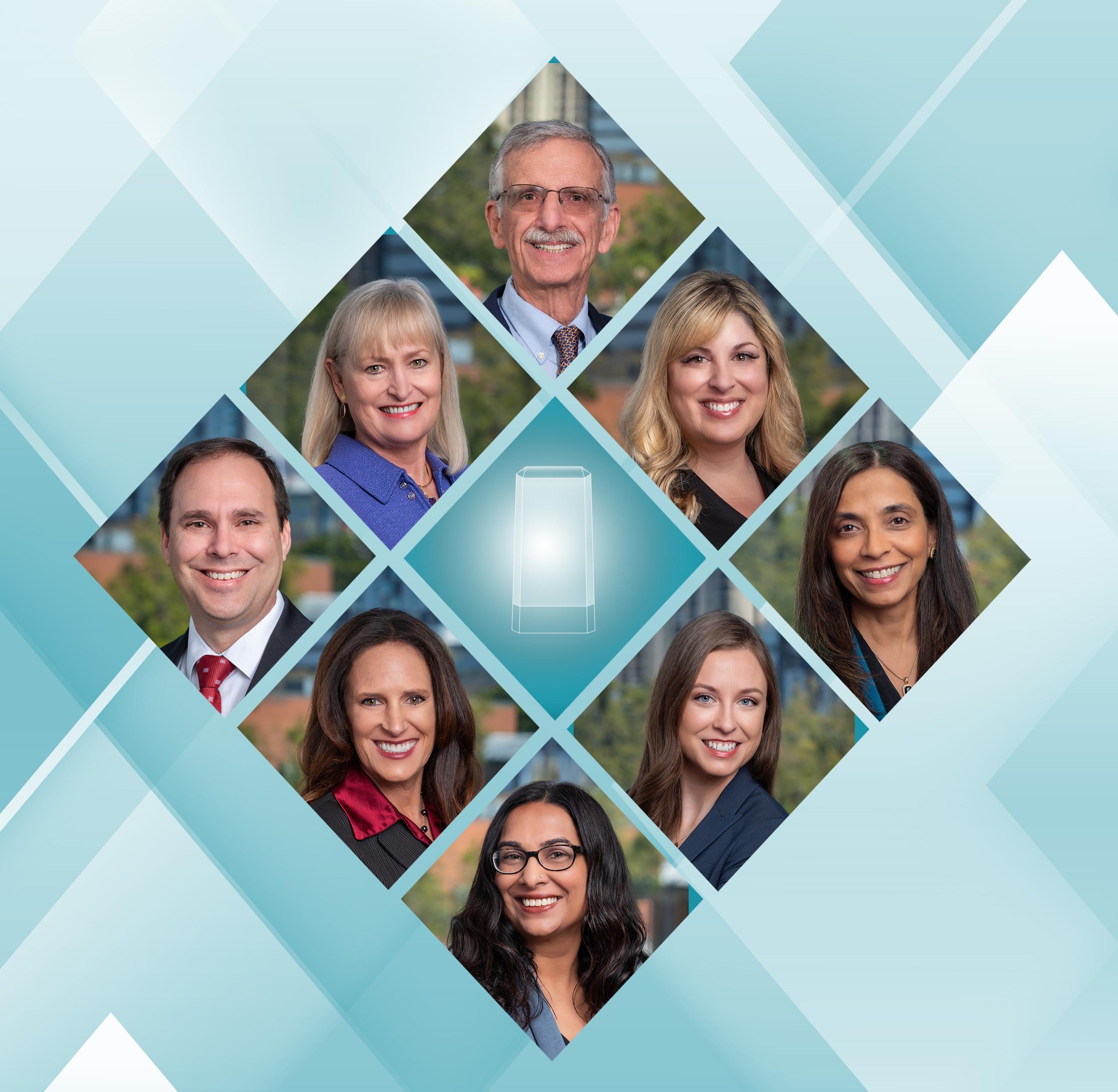

San Diego Lawyer congratulates the 2024 San Diego County Bar Association Service Award recipients.
Get to know this year’s honorees and read about their inspiration for service on the following pages.
To view the Service Awards Ceremony from May 14, 2024 visit sdcba.org/ceremony
SAN DIEGO LAWYER | May / June 2024 25
OUTSTANDING ATTORNEY AWARD
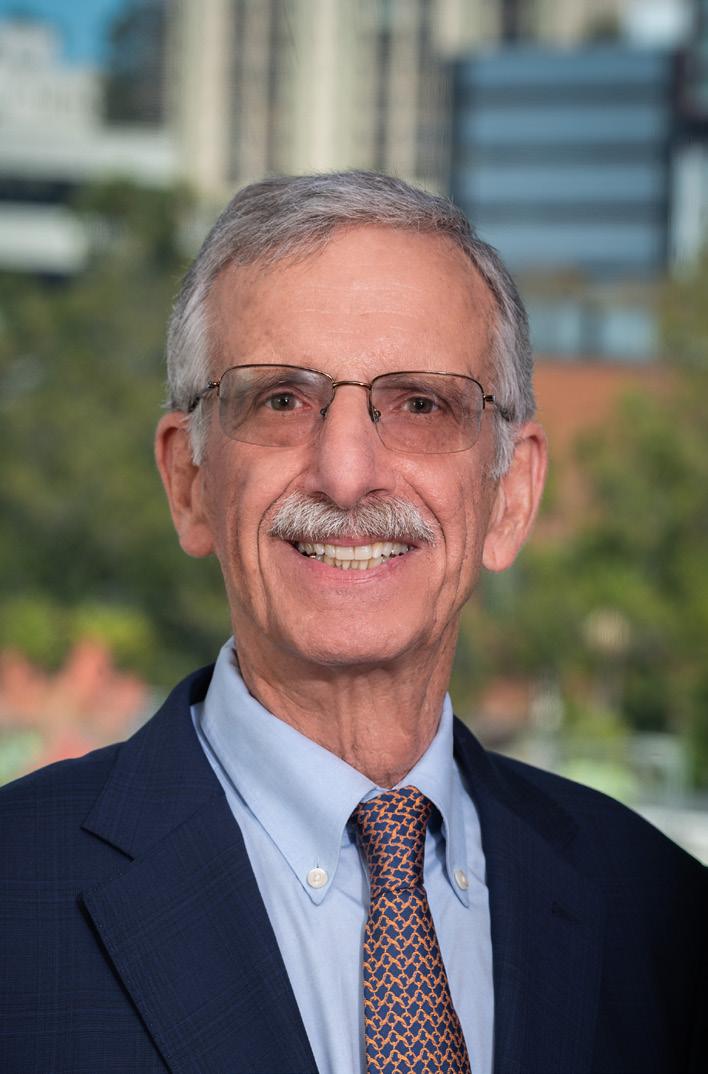

OUTSTANDING JURIST AWARD

HON. MARGARET M. MANN (RET.)
United States Bankruptcy Court, Southern District of California
Why do you serve?
Many of us are privileged to work in the law and in San Diego. We have an obligation to help others be they clients, colleagues, or others in need.
What advice would you give others to inspire them to serve?
“Pay it forward.”
What is your favorite quote?
Proverbs 31:8-9: “Speak up for those who cannot speak for themselves; ensure justice for those being crushed.”
Do you have any cherished advice that you have received from a loved one, mentor, or colleague?
My longtime friend and inspirational partner, the late John Cleary, advised, “Remember the 5 P’s: prior preparation prevents poor performance.” Preparation for any endeavor in law and life makes all the difference.
The SDCBA Law Week theme this year is “Voices of Democracy.” What does this theme mean to you in your work and in your daily life?
Every Fourth of July, a group of criminal defense lawyers gather on the grounds of the federal courts and read the Declaration of Independence. In that, we echo the Founder’s voices who risked all to create a new democratic government where the rule of law prevailed. But now democracy is threatened. There are those among us who would tear it down out of ignorance, malignancy, or both.
As Hannah Arendt said, these are people “for whom the distinction between fact and fiction, true and false, no longer exists.” And they can prevail unless we are the voices who speak up for the rule of law and our democracy. Our democratic republic is not guaranteed.
Why do you serve?
Public service gives my life purpose, connects me with like-minded volunteers, and feeds my soul.
What is your favorite quote?
“Whether you think you can or think you can’t — you’re right.” Henry Ford
What advice would you give others to inspire them to serve?
Community service is not a “one size fits all” activity. There are so many ways to contribute that something will fit everyone’s interests. For example, you could work at a domestic violence center, serve on a non-profit board, coach a kid’s sports team, teach financial literacy, work at a food bank, assist immigrants, or work in a humane shelter.
It’s difficult to be a working parent and volunteer; so it’s ok to focus on different life goals at different periods in your life.
The SDCBA Law Week theme this year is “Voices of Democracy.” What does this theme mean to you in your work and in your daily life?
Our democracy needs its citizens to speak out on important issues and listen to the other voices clamoring to be heard. This is the only way to solve our country’s challenges.
CHARLES M. SEVILLA
26 SAN DIEGO LAWYER | May / June 2024
The Law Offices of Charles Sevilla
SERVICE TO DIVERSITY AWARD
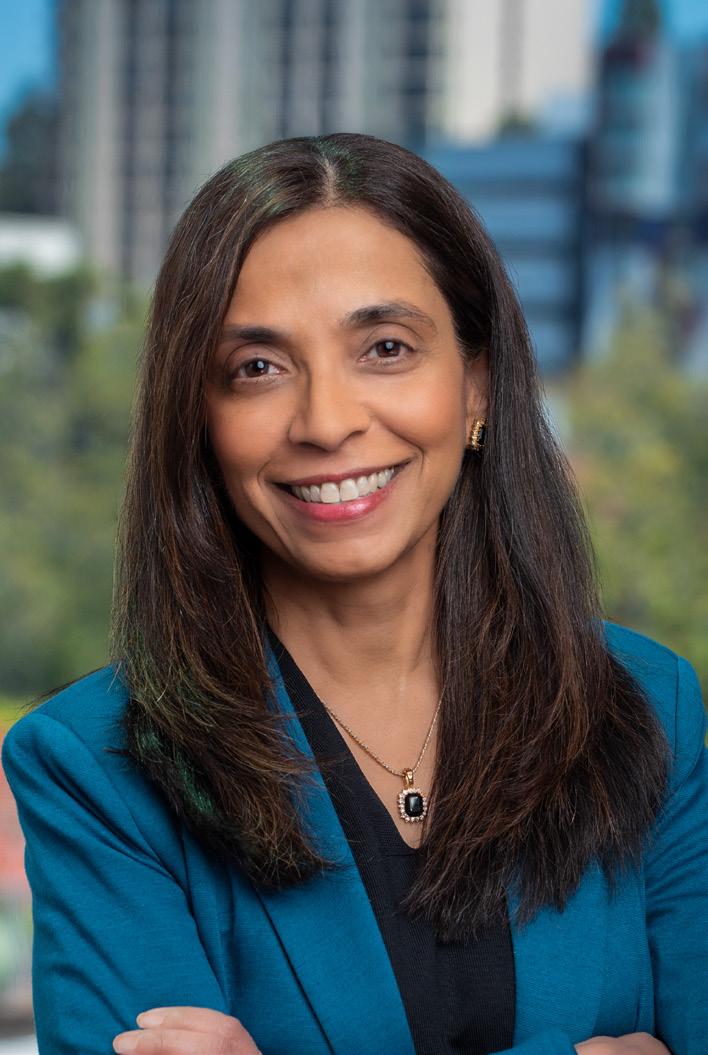
Why do you serve?
Service-oriented activities give me the opportunity to work with others to support diversity, advocate for the vulnerable, and address the issues I care about.
Service-oriented activities also connect me to people who share my values and give me the chance to develop friendships … We support and inspire one another, and we have a lot of fun while we do it.
What advice would you give others to inspire them to serve?
If you listen to your inner voice, it will point you to the one problem that troubles you the most. Once you know what that is, you can start looking for like-minded people who are doing something about it. If you are creative, you can come up with your own solution, and others will join you.
But be kind to yourself. Everyone is different, and life circumstances change. Today might be the right time for one person to serve, but it might not be for another. Recognize whether your plate is full or whether you are ready for more.
What is your favorite quote?
“Change will not come if we wait for some other person or some other time. We are the ones we’ve been waiting for. We are the change that we seek.” — Barack Obama
Do you have any cherished advice that you have received from a loved one, mentor, or colleague?

Growing up in the Sikh tradition, my family taught me the concept of nishkam seva — service as an act of love and joy that comes from a humble heart and is done without expectation. The idea is that genuine service is when a person gives their time and effort freely and unconditionally with an understanding that they are not better than the person who cannot. Instead, the opportunity to serve comes with privilege, something we should be grateful to have.
The SDCBA Law Week theme this year is “Voices of Democracy.” What does this theme mean to you in your work and in your daily life?
This year’s theme and its relationship to the rule of law touches me deeply. In 1984, politicians in India orchestrated attacks on Sikh families, and the government never held them to account. That event demonstrated what happens when the rule of law is absent and how vital it is to a stable democracy. It fueled my desire to go to law school, and it was the reason I decided to become a citizen of this country. Upholding the rule of law is at the core of what we all do as lawyers. On a daily basis, we inform our clients about their rights and obligations and enable them to make informed decisions. We empower our clients to enforce their rights or seek redress, and we use the law to challenge unfair practices and policies. We support the vulnerable and ensure that everyone, including the powerful, is held to account.

Why do you serve?
Giving back is an obligation because I truly believe that if we can, we should. I am able to serve, so I do. But more than that, it is amazing to see how many people care to serve, give back, and donate time or money to such deserving organizations, causes, and people.
What advice would you give others to inspire them to serve?
You have so much to offer, more than you think. Start small, find something that interests you, and you will be amazed at the impact a little bit of time or money can have.
What is your favorite quote?
“Fight for the things that you care about, but do it in a way that will lead others to join you.”
Justice Ruth Bader Ginsburg
Do you have any cherished advice that you have received from a loved one, mentor, or colleague?
In court, be both the most prepared and the most professional.
The SDCBA Law Week theme this year is “Voices of Democracy.” What does this theme mean to you in your work and in your daily life?
Lawyers have a special responsibility to ensure inclusivity in our representatives, protect the right to vote, and educate on civics. We all must continue to stand for democracy and ensure the pillars of our democracy are not further eroded.
COMMUNITY SERVICE AWARD
DEBORAH DIXON
The Dixon Firm
VAANI CHAWLA
SAN DIEGO LAWYER | May / June 2024 27
Chawla Law Group
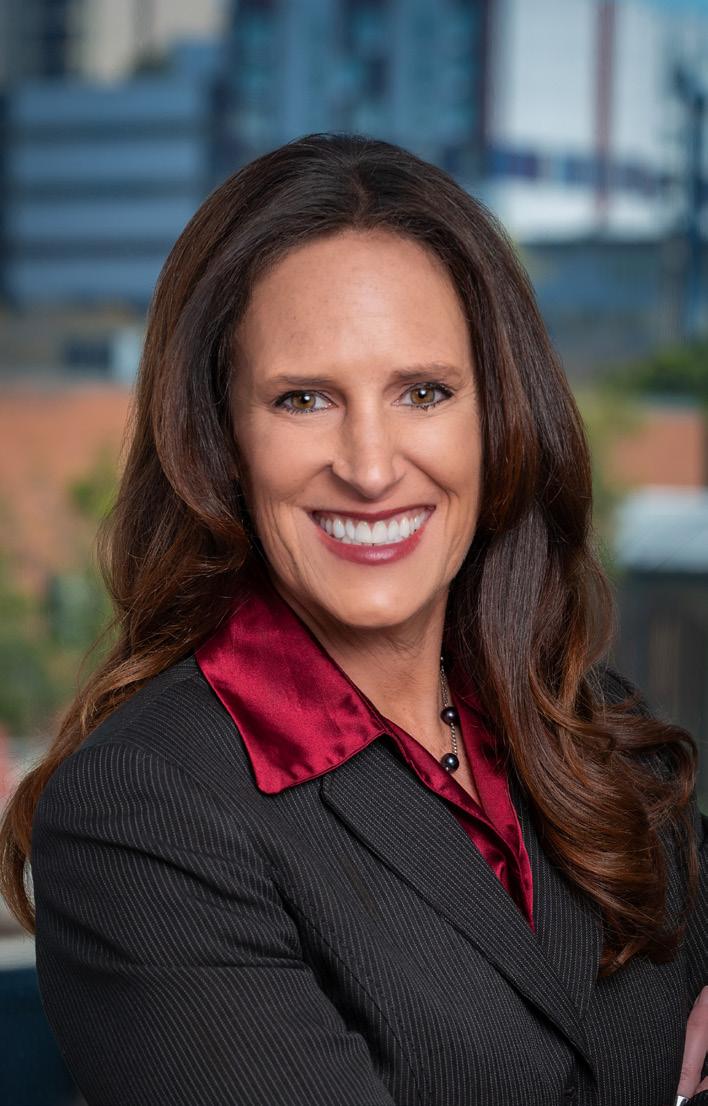 TRACY PRIOR Chief Deputy District Attorney San Diego County District Attorneyʼs Office
TRACY PRIOR Chief Deputy District Attorney San Diego County District Attorneyʼs Office

Why do you serve?
I live by the motto: “Be grateful for everything and entitled to nothing.” I’m the proud daughter of two public school teachers who instilled in me the values of hard work and giving back. My dad was a high school baseball coach, and now I understand he was mentoring and being a steward so that players/students made grades or had a safe place to go after school. I distinctly remember my dad’s funeral, when multiple former students and athletes shared the impact of his “quiet service.” Authentic and impactful service, quietly done behind the scenes for the sole purpose of helping the people, is my “why.”
What advice would you give others to inspire them to serve?
More now than ever, our country needs more servant leaders, people who think outwardly, and those who check their egos at the door. I look at life like we’re all under construction, and service helps us be better ancestors and leave this place better than we found it. Gandhi said, “The best way to find yourself is to lose yourself in the service of others.”
What is your favorite quote?
“I raise up my voice — not so that I can shout, but so that those without a voice can be heard.” — Malala Yousafzai
This quote symbolizes the importance of elevating invisible voices in our community, underserved populations around us, and those who have been abused or suffered trauma. I’ve had the honor of meeting countless victims of domestic violence, child abuse, elder abuse, and sexual assault, many of whom have been repeatedly told they are not good enough and that their voice is irrelevant. This quote reminds all of us about the importance of using our voice for good.
Do you have any cherished advice that you have received from a loved one, mentor, or colleague?
Two pieces of advice stick out, again from my dad. The first is about respect, and the second is about living life relentlessly curious. In junior high school, my dad taught us that we should “treat the principal of our school with the same courtesy and respect as we would the school janitor.” He followed it up with encouraging us to treat the most popular person in the school with the same amount of kindness as we would a person who gets teased. Looking back on this now, I see the influence it has had on how I approach people. Another piece of advice he gave was to be authentically curious about others. He said if you genuinely ask questions of the people you meet, you’ll eventually find something in common with them. I’ve cherished this advice because it shaped my core values of tolerance and inclusivity.
Why do you serve?
 DAVID MAJCHRZAK Deputy General Counsel - Shareholder Klinedinst PC SERVICE TO THE LEGAL COMMUNITY AWARD
DAVID MAJCHRZAK Deputy General Counsel - Shareholder Klinedinst PC SERVICE TO THE LEGAL COMMUNITY AWARD
My service comes from love and some of the most rewarding experiences I have are those where I believe something I have done contributed to a smile on somebody’s face or at least the relief of some stressor in their life.
I decide how to serve based on where I think I will make the most impact, what I am good at, and what I enjoy doing. There are so many ways we can help one another. But absent those three things, I suspect that I would probably be less effective and my efforts may be short-lived.
What advice would you give others to inspire them to serve?
I would be surprised if advice inspired people to serve. For me, the greatest inspiration comes from those who are already involved in a project. They are people who others want to work with because they are talented, motivated, and, most importantly, welcoming of other volunteers.
One of the most important aspects of volunteer work is that it is fun. If it isn’t, then volunteers are less likely to fully commit to it. When volunteers, particularly in leadership positions, aren’t enjoying the work, organizations risk a decline in engagement.
Do you have any cherished advice that you have received from a loved one, mentor, or colleague?
Ask. It is a simple concept, but I didn’t think to do it when I was a younger lawyer. Instead, I hoped for things to occur. But when a couple of extremely talented colleagues pointed out that was their “magic” in making things happen, it became pretty clear how to chart a course on so many projects.
No, you won’t always get a yes. But it can be surprising how many people will give them to you and will do so in many contexts. Of course, those with whom you develop relationships are more likely to respond positively. That said, don’t be afraid to reach out to a complete stranger with a request for help. Human nature leans toward wanting to give a response that will be well received.
The SDCBA Law Week theme this year is “Voices of Democracy.” What does this theme mean to you in your work and in your daily life?
The theme reflects what should be rather intuitive: that the will of the people is best served by citizens communicating their will.
This is reflected in the work we do as lawyers each time we push for an interpretation of the law that reflects our views on the way things ought to be. For me, it also is reflected in the work I have done to address how lawyers act, whether through regulation or codes of conduct. In my daily life, this is reflected by honoring what I have anticipated are the needs and desires of the people around me. But all of this starts at a simple place, looking not where I am but where the people I am interacting with or advocating for are.
SERVICE
PUBLIC
28 SAN DIEGO LAWYER | May / June 2024
BY A
ATTORNEY AWARD
SERVICE BY A NEW LAWYER


DISTINGUISHED ORGANIZATION
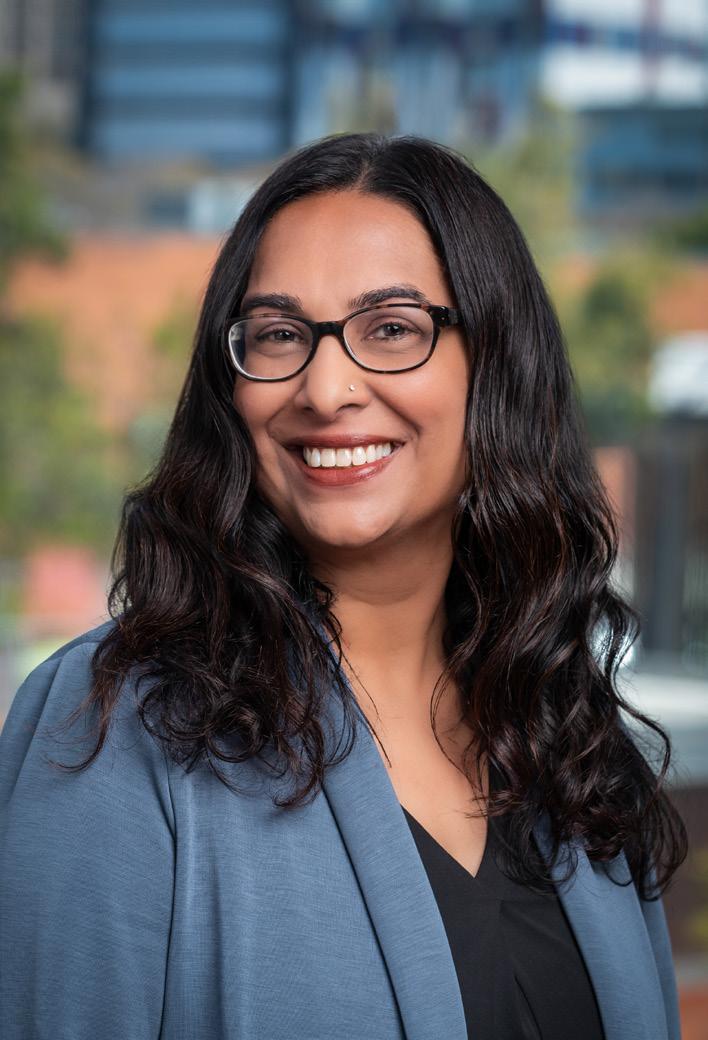

Why do you serve?
First, I serve to express my gratitude for the generosity and mentorship I have received. I am aware of the many hands propelling me forward in my life; I show my gratitude by paying it forward and contributing to my community, especially where I can be a mentor to young professionals.
Second, I was raised engaging in community service. My mother, siblings and I very often volunteered, whether it was cooking and baking for local shelters, park clean ups with our Scout troops, food drives, etc., we were giving back. It cultivated in me a deep sense of empathy for others and desire to simply help out in whatever ways I could.
Finally, my mentors here in the San Diego community are truly incredible people who care about the betterment of society and want to do good in our local community. Their example inspires me to follow that path.
What advice would you give others to inspire them to serve?
Never underestimate the influence you can have when you serve others, even in a small way. I often think of the quote, “If you want to go fast, go alone, and if you want to go far, go together.” I urge you to choose to “go together” because that’s how we can make an impact.
I know I’m not the only one who feels overwhelmed by the noise and daily grind of our lives. Serving your community reveals your heart to others and enables you to connect to the world on a deeper level.
What is your favorite quote?
Currently, one that’s been on my fridge is from Florence Nightingale: “Live life when you have it. Life is a splendid gift — there is nothing small about it.”
The SDCBA Law Week theme this year is “Voices of Democracy.” What does this theme mean to you in your work and in your daily life?
To me, this theme means being a voice for ensuring equitable access to opportunities, resources, and rights. These are cornerstones of a true democracy. As current times illustrate, not all fundamental human rights are protected; namely, a woman’s right to bodily autonomy is under attack. This theme can remind us that, as attorneys, we are in a unique place to help shape the world and ensure democracy remains.
As president of the Lawyers Club of San Diego, I strive to be a voice of democracy through my work for the organization, where we use our voices to move toward equity in all things.
Why do you serve?
My journey of service has been profoundly personal and transformational, particularly through my work with The Tariq Khamisa Foundation (TKF). It is a testament to the enduring legacy of my brother, Tariq, whose life and spirit inspire the foundation’s mission. Serving through TKF has been a pathway to healing, allowing me to navigate the profound loss of my brother by turning grief into a force for positive change. Service is the essence of who I am, and through it, I find solace, purpose, and the means to inspire others toward a path of healing and positive impact.
What advice would you give others to inspire them to serve?
In a world where individualism often takes precedence, it’s important to remind ourselves of our collective responsibility toward fostering a compassionate and united society. To inspire others to serve, I would emphasize the interconnectedness of our lives. The well-being of our community directly influences our own. When one of us suffers, it reverberates through the fabric of society, affecting us all. It is, therefore, incumbent upon us to act not out of obligation but from a deep-seated belief in the value of service.
Do you have any cherished advice that you have received from a loved one, mentor, or colleague?
Life demands a delicate equilibrium between our spiritual essence and material pursuits. Both dimensions require thoughtful nurturing, fostering a holistic approach to our existence that honors the depth of our being.
The SDCBA Law Week theme this year is “Voices of Democracy.” What does this theme mean to you in your work and in your daily life?
The theme “Voices of Democracy” resonates deeply with our mission at TKF. In essence, this theme underscores the importance of inclusion, representation, and the empowerment of all voices within the democratic process. At TKF, we embody a culture steeped in humanity, compassion, and healing. Our endeavors are underpinned by restorative and social justice frameworks that not only acknowledge but also celebrate diversity and uniqueness. This commitment is mirrored in our daily efforts to develop and implement strategies aimed at dismantling systemic racism and ethnic oppression. In our work, “Voices of Democracy” translates to actively listening to, learning from, and amplifying the stories and perspectives of those we serve, particularly the youth, who are often marginalized. It means creating spaces where dialogue, understanding, and healing can flourish, driven by the belief that true democracy involves the collaborative efforts of a diverse populace working toward common goals of equity and peace.
AUDREY SURRIDGE Fisher & Phillips LLP
TARIQ KHAMISA FOUNDATION
SAN DIEGO LAWYER | May / June 2024 29
Answers provided by Tasreen Khamisa, Executive Director of the Tariq Khamisa Foundation.
2024 Service Award Ceremony
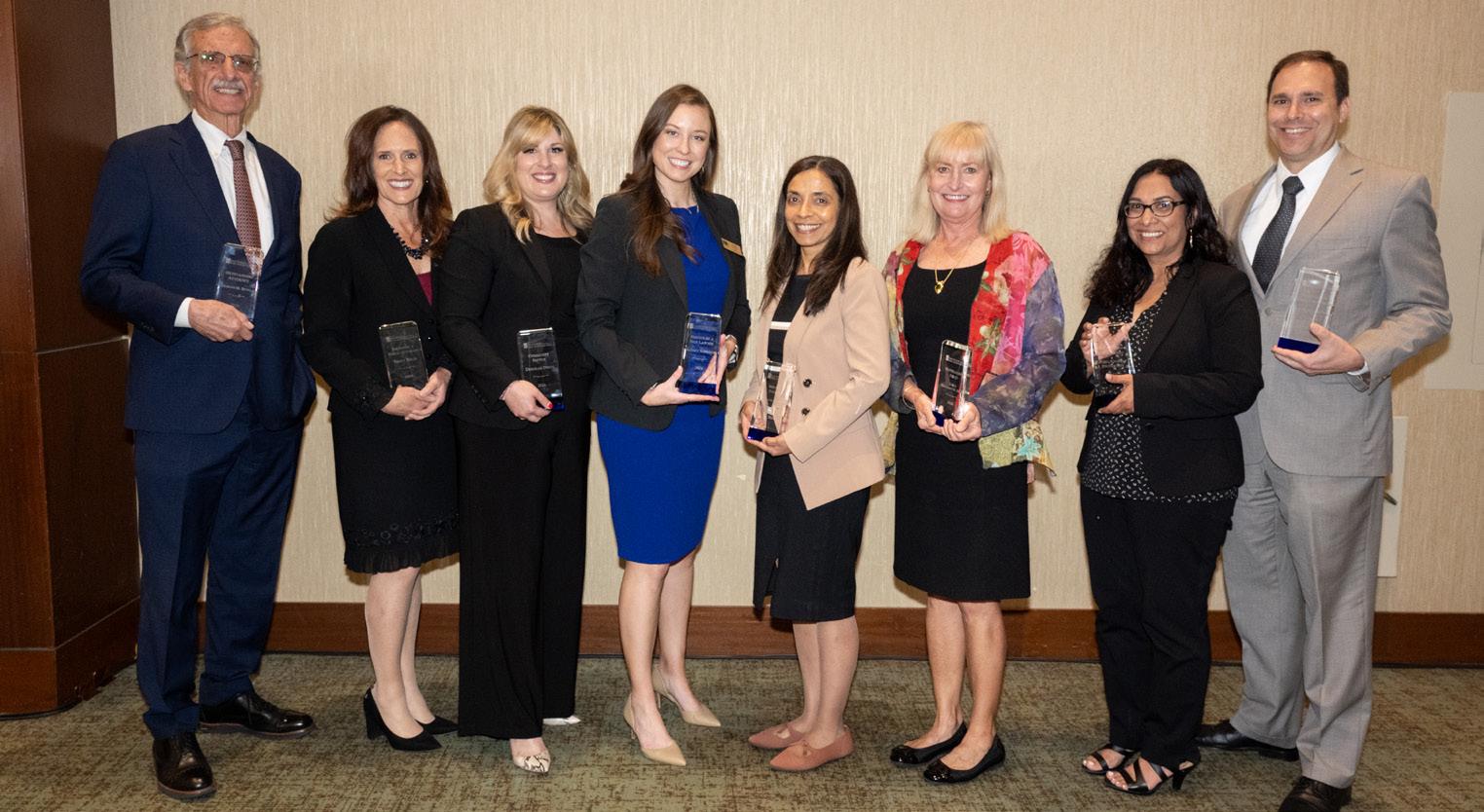

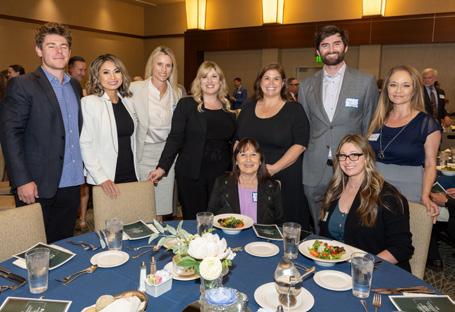

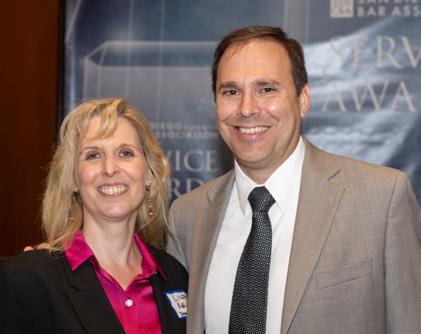
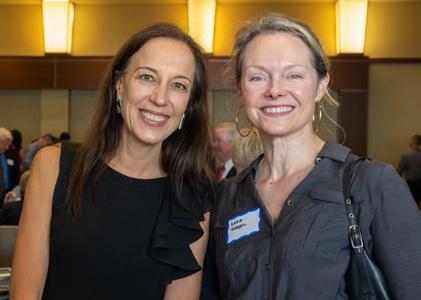



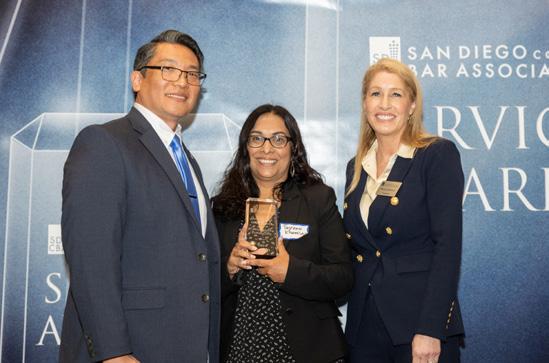
Poster Contest

FIRST PLACE - GRADES K-5


FIRST PLACE - GRADES 6-8

FIRST PLACE - GRADES 9-12
EMILY NAWOJ SAINT JAMES ACADEMY
SOPHIA SWAIN SAINT JAMES ACADEMY
REYMUNDO PEREZ LINCOLN HIGH SCHOOL
2024 Law Week
FIRST PLACE WINNERS
L to R: Service Award Winners Charles M. Sevilla, Tracy Prior, Deborah Dixon, Audrey Surridge, Vaani Chawla, Hon. Margaret M. Mann (Ret), Tasreen Khamisa, David Majchrzak
Hon. Margaret M. Mann (Ret)
Charles M. Sevilla
Tracy Prior
L to R: Brandon Kimura, Tasreen Khamisa, Stacey A. Kartchner
L to R: Mukesh Mehta, Vaani Chawla, Audrey Surridge, Gayani Weerasinghe
Linda Keller & David Majchrzak
Deborah Dixon and supporters
Teodora Purcell & Kara Siegel
30 SAN DIEGO LAWYER | May / June 2024

Have you ever heard a high school student respond to a hearsay objection? Listening to a 17-year-old explain that a statement is not being used for the truth of the matter asserted or that the statement was made by a party opponent makes me question what I was doing with my life when I was that age. This past February, my students competed in the annual San Diego High School Mock Trial Competition. Coaching high school mock trial for the last three years has been one of the most rewarding experiences of my legal career. Working with the students, seeing them go from being afraid to speak in front of their peers to arguing a murder case in front of actual judges and attorneys is simply incredible.
I was first exposed to mock trial while in law school, but I realized some of my colleagues had been competing for years, not only in college but at the high school level. These competitions exposed them to the legal community, helped them discover what career paths they might want to take, and taught them valuable public speaking and persuasive skills. Because San Diego County High School Mock Trial wasn’t around when I was in high school, I was already playing catch up. After becoming an attorney, I wanted to do my part to expose students to the legal profession, and I found one of the best ways to do that was to become an attorney coach for a high school mock trial team.
Coaching a team, however, is only one small facet of the phenomenon that is high school mock trial. To learn more about what it takes to host this conference, I met with the Honorable Anthony Campagna. Judge Campagna is the current chair of the San Diego County High School Mock Trial Committee. Each year the competition grows, and this year it hosted some 750 students from 38 different schools. The students are guided by about 80 attorney coaches in addition to the teachers at the schools that make student participation possible. Judge Campagna stressed the fact that this competition would not be possible without the immense collaboration between members of the state and federal bench, the county bar, government agencies, and attorneys in private practice who are all volunteering their time to make this competition a reality.
NOT INVOLVED WITH HIGH SCHOOL MOCK TRIAL? YOU SHOULD BE!
By Isaac Jackson
Given the effort and time commitment required to chair the High School Mock Trial Committee, I asked Judge Campagna, “Why do you do it?” He told me it’s simply because he loves working with students. He loves to see their exuberance for whatever they do. These kids are really good, showing skills that we look for in lawyers. Ultimately, Judge Campagna described the work as “such a fun gig.”
While the hard work, dedication, and countless hours of preparation by the Mock Trial Committee members, high school teachers, and attorney coaches are significant, the competition would not be possible without attorneys to serve as scorers. During the most recent competition, each of the four preliminary rounds required 57 attorney scorers. Scorers play a vital role in the competition by providing valuable feedback to the students. It’s the attorneys’ scores that make it possible to recognize the top-performing students and reward them for their hard work. This competition means a great deal to the students, and having attorney scorers from different practice areas and varied levels of experience ensures that the right teams advance.
If you’ve never volunteered as an attorney scorer in the past, or maybe it’s been a few years since you last volunteered, your help is needed. This may be a mock trial, but to these students, it has real implications. The scores, the awards, and the comments all make an impact on the students. As attorneys, we have the power and privilege to make that impact a positive one. I love being a mock trial coach, but not everyone has the flexibility to coach a high school team. Most of us, however, do have the capacity to set aside one evening or a Saturday morning to serve as an attorney scorer. These students are the future of the legal profession. It’s our job to do what we can to set them up for success.
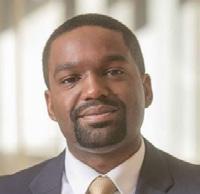
Isaac Jackson (isaac.jackson@sdcda.org) is Deputy District Attorney with the San Diego County District Attorney’s Office.
SAN DIEGO LAWYER | May / June 2024 31
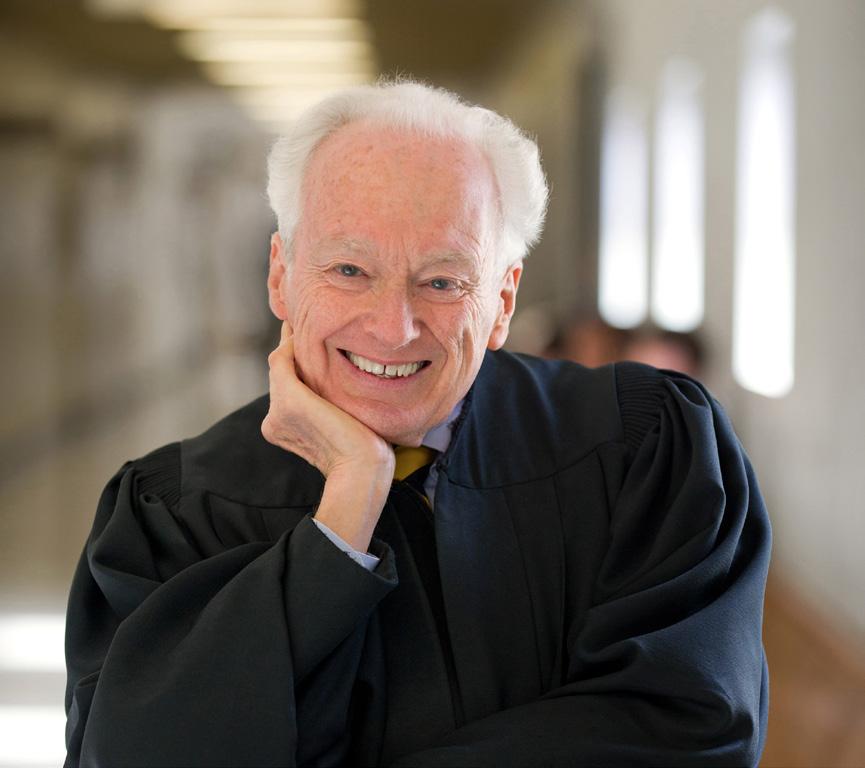
OJUDGE DAVID GILL MARKS 50
By George W. Brewster Jr.
n March 4, 1974, David Gill was appointed to the San Diego Municipal Court by Governor Ronald Reagan. Fifty years later, he still serves the people of the County of San Diego as a Superior Court Judge. And in December, he turns 90. He is the most senior current judge (in years of service and likely age) on the California bench.
According to the Judicial Council, historically, five California state judges have marked over 50 years on the bench, with Gill now at number six.
Gill’s 50-year mark was noted in a message to the entire bench by Presiding Judge Maureen Hallahan, who described Gill as “a judicial legend in our community. He has tried thousands of criminal cases and taken on some of the most difficult and complex cases, including the Dale Akiki case, which was, at the time, the longest criminal trial in San Diego Superior Court history, lasting 217 days.” One of the many accolades received by Gill was the SDCBA’s service award for Outstanding Jurist in 2012; another is as the first recipient of the Pillar of the Community Award presented by the American Board of Trial Advocates.
The ABOTA award is fitting, as Gill loves being in the courtroom. He noted that because the one person who is always in the courtroom is the judge, he gladly took the appointment when the opportunity arose. His career as a lawyer was relatively brief — a short time with the City Attorney’s Office until a spot in the District Attorney’s Office opened up, and then four years after that, he went into general private practice with three others. As a member of the SDCBA Board of Directors, he met and got to know Edwin Meese, who became one of his solid connections with the governor’s office. It paid off.
Gill is an only child and was raised in San Diego by his stepfather (the first plastic surgeon in San Diego) and his mother (who managed his stepfather’s medical office); he credits his mother with fostering his interest in community service and, especially, music. “The best thing she did was present me with a clarinet and then got me music books and instruction. I joined a local junior high band called the Bonham Brothers Boys Band, with 150 members. We played many venues, including marching in the Tournament of Roses parade.” Although he started with the clarinet, he later switched to the saxophone. This, in turn, led him to have an interest in big dance bands. While he no longer plays, he credits his public speaking ability to his stage experiences with the band.
Gill went on to Stanford for his BA (1956) and his JD (1959), pursuing the law because he had no interest in the sciences and because his parents said he loved to debate everything. After the bar, he joined the Army, was a proud graduate of the School of Infantry at Fort Benning, and 35 years later retired from the Army reserves as a colonel. He is quite proud of his career with the Army and is a two-time recipient of the Legion of Merit, given for exceptionally meritorious conduct. He is also proud of the fact that he can still fit into his uniform.
Another bit of public recognition is from jurors. Cathy McCoy, the court’s Jury Services Manager, recalled how Gill was always happy to address prospective jurors in the jury lounge, noting that Gill “has performed more juror greetings than any other judge in recent times. Jurors have always enjoyed his message and often provided juror comment cards expressing their appreciation of his message and their excitement to serve after hearing his stories. His passion for jury service was evident and infectious.”
32 SAN DIEGO LAWYER | May / June 2024
Gill began his talks to the jury pool shortly after he came on the court. He said, “At the time of my appointment, I thought I ought to go sit in on one of the jury orientations so I didn't contradict what they were being told.” He then asked Geraldine Stevens, then with the Jury Commission office and doing the jury presentations, if she would like a judge to come down and introduce her. He started to come down four or five times a week to do the introduction and welcome people to jury duty, which soon expanded, eventually including other judges.
“It was kind of a challenge to present the basic message — we can’t do it without you — and remain fresh, so it was good to have others also step in,” said Gill. “I had a lot of fun doing it.”
He says there are two rewarding recurring events for him: reviewing candidates for Eagle Scouts (which he has done for over 50 years) and meeting prior jurors in public who remember him and say, “Oh, you’re the jury judge!”
When asked what makes a good judge, Gill said first and foremost, “you have to be a good listener, and willing to consider all sides of whatever the situation is, and then
make your decision on the merits. You have to be patient — there are occasions where you want them to cut to the chase. But a judge has to have a good poker face and enjoy intellectually all aspects of whatever the situation is, and then make the decision.”
He has been giving more thought to retirement — maybe at age 90 or perhaps at the end of his current term of office ending in January 2027 — but no firm decision has been made. However, without children or grandchildren, he notes he marks the end of the family line and has found that working isn’t keeping him from doing what he wants to do. And generally, being on the bench is what he wants to do.
Note: Gill was previously interviewed as part of the initial SDCBA’s Legal Legends video interview program in 2006, which can be viewed on the SDCBA’s “Legends of the Bar ” webpage
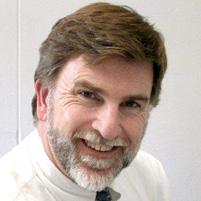
George W. Brewster Jr. (sandbrews@aol.com) is a retired attorney after 35 years of practice, including JAG, private practice, and the last 30 with the County of San Diego, Office of County Counsel.
Experienced Employment Neutrals

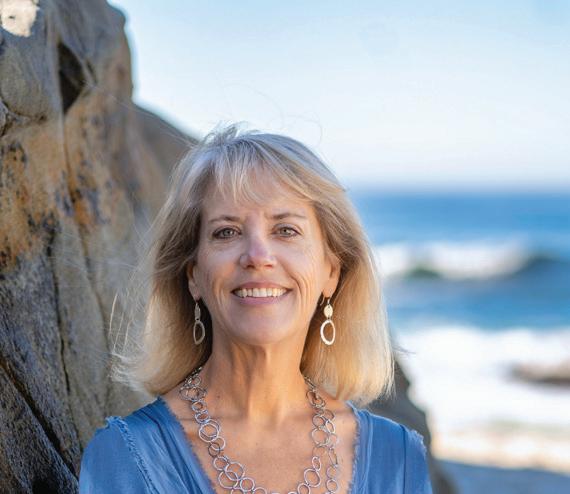
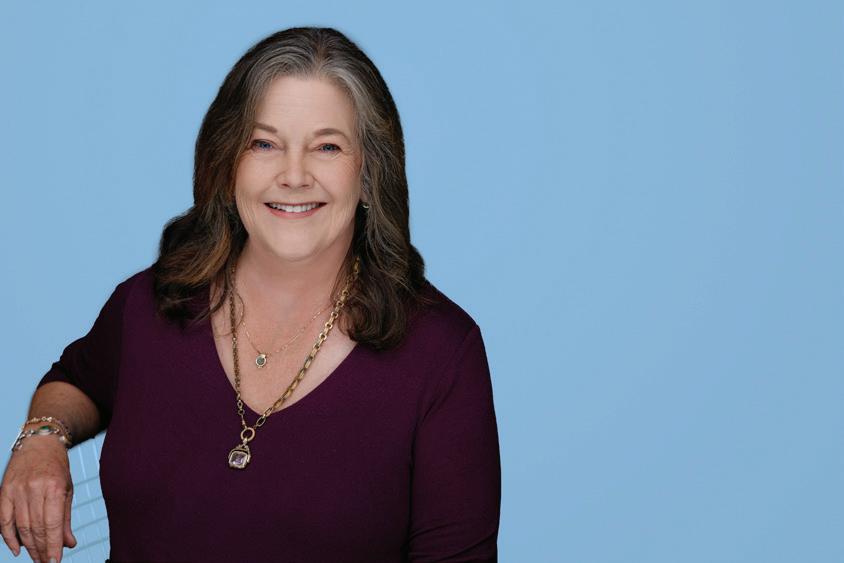


westcoastresolution.com To schedule a case, please contact us at 619-238-7282 or visit us online:
We know labor and employment law. Serving all of CA via online dispute resolution. Joann Rezzo Award-Winning Full-Time Neutral; Background as a Plainti and Defense Employment Litigator Expert neutral with 33+ years experience with parties from diverse industries Nationally Recognized Expert; 40 Years Trying and Resolving Experience with all case types, both simple and complex, including: Harassment, Discrimination, Retaliation, Wrongful Termination, Breach of Contract, Leave of Absence, Accommodation, COVID, Wage and Hour, PAGA, Class Action, Equal Pay, Free Speech, Privacy, Civil Rights, Higher Education, Qui Tam, Assault, Bullying, Internal Workplace, Pre-Litigation, Post-Investigative, Post-Verdict, ADA/failure to accommodate. A division of the National Conflict Resolution Center

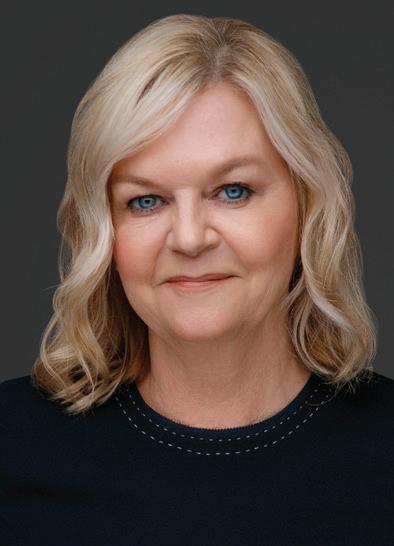




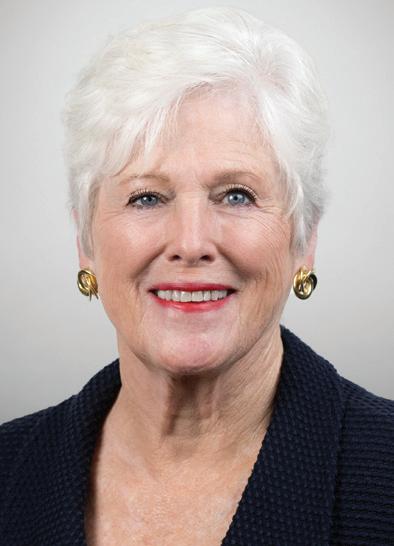





SAN DIEGO COUNTY BAR ASSOCIATION TIME CAPSULE
By Michael L. Crowley
Buried in Old Town under the floor of the 1850 jail cell at the first San Diego Courthouse is a time capsule of legal memorabilia. It was buried 25 years ago and slated to be opened 25 years from now for those of you who will still be around. It was part of the centennial of the San Diego County Bar Association in 1999.
The committee consisted of the Hon. Michael Orefield Jr.; the Hon. Catherine Bencivengo (although at the time of the committee work she was not yet a judge); Gary Osborne, civil litigator; and myself, a criminal defense attorney.
Also in attendance at the dedication event on Sept. 26, 2001, was guest speaker George Brewster, who was also the author of the plaque representing the time capsule which reads:
1999 Time Capsule 2049
Commemorating the Centennial of the San Diego County Bar Association
1899-1999
(Buried beneath the Courthouse Jail)
“The law has got to be stated over again; and I venture to say that in fifty years we shall have in it a form of which no man could have dreamed fifty years ago.”
— Oliver Wendell Holmes Jr.
“In 2049, possibly one of our grandchildren will be bar president, and I will be 91, hopefully,” Brewster said, at the time.
I remember the great fun of our sessions determining what to put in the capsule. Should we put a floppy disk (remember those?) in the capsule? Could it be read in future computers? OK, let’s put a computer in the capsule to read the disk in 2049. OK, what if electrical plugs are not the same? How would the computer get power?
Our speculations were boundless without any answers. In the end we decided to just put documents in it. I was tasked with researching how we could archive the records. There are companies that provide products and advice to preserve documents. In 25 years we will know if the capsule’s contents survived.
In an Oct. 7, 1998, article in the San Diego Daily Transcript, Judge Orfield is quoted saying the capsule will probably
contain a “pictorial look at what it’s like to practice in 1999” with photos of code books, the Hall of Justice, lawyers arguing motions, and computers.
In the end, we decided to document the bar events of the day. What did the capsule contain? One of the few bits of documentation that exists is the list of documents in the capsule. This bit only survives because of the official/unofficial bar historian George Brewster. Included were such items as the:
• 1999 issues of San Diego Magazine
• San Diego City Council resolution concerning the capsule
• Attorney’s Directory (so if you were around in 1999, your listing will live on in history)
• A picture of San Diego’s first courthouse
• Law Week Program & Invitation
• Law Week Winning Poster
• San Diego County Bar Association membership application
• Pictures of the jail
• Photo of Judge William A. Yale
• Essays on what the practice of law will be like in 2049
• Photo of the site of San Diego’s first Courthouse
These items were accompanied by many other bits of memorabilia. And, just before the capsule was sealed, Brewster tossed in a 1999 quarter.
The time capsule toured the various county courthouses in 1999. The capsule was officially sealed in a ceremony during the December 2000 Stepping Up event at the 7th Avenue Bar Center. The capsule was then buried in 2001.
The time capsule was dedicated and buried in a Masonic ceremony presided by Judge Jack Levitt. Finally, we have a letter sent by 2001 SDCBA President Aaron H. Katz to the International Time Capsule Society (affiliated with the British Museum) asking them to notify all the proper people in San Diego prior to April 22, 2049, the bar’s anniversary.

Michael L. Crowley has practiced criminal law for more than 35 years and is a Criminal Law Specialist. He is a former editor of DICTA Magazine, the predecessor of this publication.
SAN DIEGO LAWYER | May / June 2024 35
THE REWIND By George W. Brewster Jr.

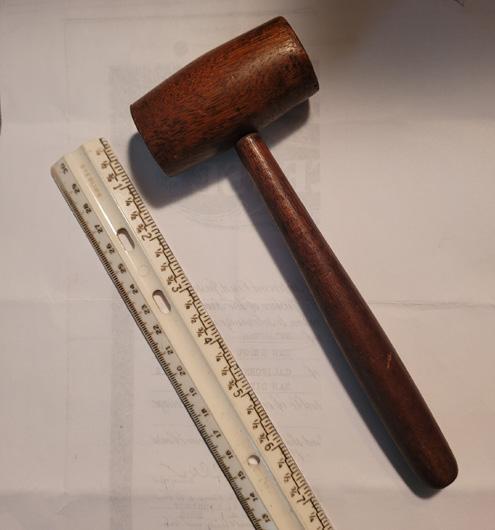
THE CASE OF THE TRAVELING GAVEL AND THE WAYWARD JUDGE
On Dec. 28, 1932, The San Diego UnionTribune wrote: “Jim Kilby, veteran bailiff and now in Presiding Judge C N Andrews’ court, department 4, has discovered that his gavel is missing Kilby reports that he left the gavel in the usual place, but this morning it was missing Any information as to the whereabouts of the implement will be appreciated by Jim Kilby ”
Well, better late than never. On April 22, 2024, — the SDCBA’s birthday and some 91 years later — the missing gavel from Judge Charles Nathaniel Andrews’ court was returned to the downtown courthouse. This is its story.
The first appearance, if you will, of the missing gavel came by way of a recent voicemail to the bar association:
“My cousin back in Illinois has mailed me something. My dad was present at her parents’ wedding in 1932 in San Diego, it was Judge Andrews, and I guess after the wedding, my dad reached in his coat and presented the newly married couple with Judge Andrews’ gavel. I am now in possession of stolen property and would like to turn it over to the Bar Association.”
This message was left by Oceanside resident William Bacon.
We thought this sounded like a good story, so we reached out to William Bacon. He sent photos of the gavel and a copy of the marriage license of Carl Minniear and Martha Bacon. Sure enough, it was recorded at the request of “Judge Andrews” on Dec. 27, 1932, the date of the missing gavel noted in the quoted newspaper story above. It also lines up with the timeline for Judge Andrews, who
served as a judge on the San Diego Superior Court from 1912 to 1935. More on Judge Andrews shortly.
The small wooden gavel, roughly eight inches long, went with Carl and Martha to Hawaii — he was stationed on the USS Phoenix, and the gavel was sitting in their Honolulu home at the time of the Pearl Harbor attack. According to their daughter Wendy, the gavel thereafter traveled with the family for “thousands of miles” and eventually ended up with her in Illinois until she recently sent it off to her cousin in San Diego (reporting party William Bacon). It was mailed to George Brewster (the author) and then brought down to Michael Roddy, CEO of the San Diego Superior Court, for placement in one of the court’s display cases.
Back to Judge Charles Nathaniel Andrews. Andrews was born in Wisconsin in 1859, studied law there and elsewhere, and later taught in Tennessee before establishing a law practice in Minnesota. He made his way to California in 1907, and just five years later was appointed to the Superior Court by Gov. Hiram Johnson. He had to run for the office in 1914 against W.R. Andrews, a former judge from Washington State, encouraged to run by political party opponents to confuse the voters. But Judge Charles Nathaniel Andrews had his initials (C.N.) printed large and in red on his election posters and won by a small majority.
Law Librarian and legal historian from 1951-1971, Leland Stanford, wrote about Andrews in two of his books, “Footprints of Justice” and “San Diego’s Legal Lore & the Bar.” In “Footprints of Justice,” Stanford wrote, “[Andrews] was no sheep, or follower of any legal bellwether.” Unlike modern jurists, “He didn’t use precedents as authority, but as guides for his own thinking. When a legal argument was
36 SAN DIEGO LAWYER | May / June 2024
PORTRAIT OF JUDGE C.N. ANDREWS NOW RETAINED BY THE LAW LIBRARY. It is believed to have been hung in the superior court department 4 where Andrews sat during his 22 years on the bench; it was painted by New York artist John Vale and acquired by the Bar Association of San Diego (later renamed SDCBA).
concluded, he leaned back in his judicial chair, frequently with his back to the courtroom, and searched his own thoughts for the right answer.”
Judge Andrews didn’t rely on case law but rather his own gut feeling about the case before him. According to Stanford, Andrews "wrote decisions without citing a single authority" while he was sitting on the appellate bench. Despite this method, Stanford wrote that Andrew's decisions were generally "accepted by the bench and the bar as the final correct analysis."
In Stanford’s files maintained by the Law Library is a letter dated Feb. 10, 1960, from Andrews’ son Helmus W. Andrews (a produce broker) to Judge Clarence Harden, essentially complaining about a request for money (apparently $1,000) made by Stanford for some sort of library endowment in Andrews’ name. Helmus said he didn’t make the sort of income that doctors and lawyers made. (A handwritten note on the letter’s margin from Stanford states that the son later contributed $100 “to the ‘C.N.’ collection.”) There is also a letter from this same son to Stanford, giving light biographical information and referring to his father as “the Judge.” His mother, Mary Frances Baldwin and Andrews the Judge had four children. Andrews The Judge was beloved by Stanford, to be sure; by his son, it is hard to say.
Nothing is mentioned in Stanford’s books, or in his files maintained at the San Diego Law Library, about the stolen gavel.
It should be noted that Judge Andrews married a second time to Bertha Johnson, in August 1933, when he was 73 and she was 54; the marriage was announced in a frontpage SDUT story, noting that Andrews had “listened to the vows of about half the persons obtaining marriage licenses here in recent years.”
Further research — with the terrific assistance of San Diego Law Library Assistant Director Laurel Moran — uncovered over 1,000 SDUT articles mentioning Andrews. These articles report that Andrews had ideas we would find offensive and repugnant today. In the Sept. 5, 1934, edition of the paper, Andrews is quoted as advocating the sterilization of habitual criminals, insane people, and others “whom he termed sociologically unfit” while speaking at a County Bar event. Andrews also spoke of the “unfit” as “adding tremendously to the burden of taxation.”
Andrews’ announcement of his resignation made the front page of the SDUT. He stepped down, at age 75, on Jan. 1, 1936, having served 22 years on the bench, the last 10 years as presiding judge. The paper noted his term of service was then the longest continuous term as a superior court judge in the history of San Diego County.
As was common during the 1930s, many overlooked Andrews’ offensive views and instead praised him as a jurist. The bar president at the time (and later Superior Court Judge), John Hewicker, was quoted saying Andrews’ resignation would result in the loss of one of the “most able, conscientious and respected judges.” Superior Court Judge L. N. Turrentine described Andrews as “the best beloved judge,” and said he hoped Andrews would enjoy his retirement while he was “physically and mentally in his prime.” Andrews died two years later. The remainder of Andrews’ term was filled by Gordon Thompson Sr. (then assistant DA; his son and namesake later was appointed a federal judge).
The SDUT ran another story about Andrews’ retirement on Jan. 1, 1936, with a photo showing Judge Clarence Harden presenting a gold watch, chain, and knife to Andrews. (Note: Andrews’ son had noted in his letter that as a young man Andrews was attacked and stabbed multiple times, and was scarred for life. Funny to give him a knife at retirement!) Prominent in the photo is a very large gavel, presumably a replacement for the one stolen almost exactly three years prior and likely too big to smuggle out of the courtroom. Andrews died not long after his remarriage and retirement, on July 8, 1937. At his passing and without any mention of Judge Andrews’ controversial opinions, the SDUT ran an editorial noting San Diego’s loss of “a citizen whose influence invariably was exerted in the interests of sanity and tolerance and justice. It is no empty compliment to say that Judge Andrews was a credit to the local bench.”
And finally, this: The SDUT wrote on Jan. 17, 1933: “Federal district court almost didn’t open yesterday morning … someone believed to be after a trophy from the courtroom carried away the gavel with which the marshals bring the court to order.” Who knew there was a gavel theft ring in San Diego? And that concludes this story’s gavel-to-gavel coverage.

George W. Brewster Jr. (sandbrews@aol.com) is a retired attorney after 35 years of practice, including JAG, private practice, and the last 30 with the County of San Diego, Office of County Counsel.
SAN DIEGO LAWYER | May / June 2024 37


EWHAT TO DO WHEN YOU ARE OFFERED A COVETED SEAT ON THE BOARD OF DIRECTORS OF AN IMPORTANT NONPROFIT
By Charles V. Berwanger
veryone who is anyone is on the board of directors of local nonprofit Artists Support Group. You have been trying for years to get on the board. Board membership will enhance your law career immensely, be great for marketing, and raise your profile in the community.
Before you say “yes” you should ask some questions — that is, do your due diligence.
One of the most important questions is: Why are you being offered this position? You may find out that the board just lost its only lawyer member. Although it is a reputable organization, Artists Support Group has historically relied upon its lawyer board members for legal advice. Your board membership is expected to provide legal guidance regarding all legal matters Artists Support Group will continue to encounter.
The Artists Support Group, a 501(c)(3) nonprofit corporation, has several employees, puts on performances and exhibitions, and engages in many other activities intended to further its mission to advance the arts. The retiring lawyer board member was able to assist the group in successfully navigating its many issues, including employment, regulatory demands, leases, and contracts.
Although it is an honor for you to have been invited to fill this position, that does not dispense with your need to do your due diligence.
You should understand what is expected of a board member, both expressly, and culturally, including the number of meetings to attend each year with the attendant preparation time required. Additionally, nonprofits are typically cash-strapped, not only requiring board members to contribute financially but also engage in fundraising efforts, which may be substantial.
Does Artists Support Group have directors’ and officers’ insurance (D&O insurance)? As an attorney, you understand that based on the activities and structure of Artists Support Group, there is the ever-present risk of problems arising, which may result in litigation. Board members as fiduciaries have an obligation to ensure the proper performance
of the nonprofit and are potentially subject to litigation, entailing defense costs and potential liability. The sources of potential problems include employee claims, breach of contract disputes, and a failure to satisfy regulatory requirements. Even though D&O insurance may be perceived as a luxury by some board members, the necessity for such insurance is doubtless.
Your taking over the position of the retired de facto legal advisor board member raises many issues as well. You may be expected to provide legal advice without compensation. Providing legal advice raises the significant risk of an attorney–client relationship being established between you and Artists Support Group which requires that you comply with the California Rules of Professional Conduct in your dealings with the organization. It also adds another set of fiduciary duties to your obligations to the organization, in addition to the fiduciary duties you will owe as a board member.
You may take the prophylactic measure of advising Artists Support Group that you are not establishing an attorney–client relationship. This advice may not protect you from a claim based on what turns out to be legal advice given by you, even if given in tandem with an admonition that you are not acting as Artists Support Group’s attorney. Whether or not there is an implied attorney–client relationship established is fact-intensive. The fact that you are an attorney and have given what a reasonable observer may conclude is legal advice may expose you to liability.
There are many marvelous nonprofit organizations, however, before accepting a position, know what you’re getting into. Establish an understanding that you will not act as counsel, and the organization acknowledges that. The risks attendant with stepping into the shoes of the retired lawyer board member are many and may outweigh the benefits.
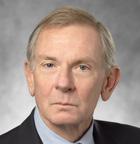
Charles V. Berwanger is a partner of Gordon Rees Scully Mansukhani, LLP and a member of the San Diego Bar Association’s Ethics Committee
SAN DIEGO LAWYER | May / June 2024 39
We’re all familiar with de novo review, where an appellate court is asked to review issues of law anew — i.e., without deference to the lower court. This gives the appellant a new chance to prevail, unprejudiced by their lack of success in the prior proceedings.
We single folks similarly hope for a new chance of success in dating in spite of our past history. Yet, our outlook is inevitably influenced by our mixed bag of good and not-as-good dating experiences. Along the way, we may have formed negative beliefs about how certain types of people behave, about how relationships operate, and about our worthiness as a partner in general. These expectations, in turn, can become self-fulfilling: they can lead us to close ourselves off to new people, attract the wrong types of people, or wrongly judge new people based on false assumptions.
That is not to say that we shouldn’t learn from our past experiences and apply those lessons going forward. Rather, we can learn to distinguish between issues of law — i.e., our general assumptions and beliefs about dating — and issues of fact, i.e., the specifics of a particular dating situation. The former should be reviewed de novo . Issues of fact, rather than law, should be our primary guide in assessing new relationships.
Review Ourselves and Our Prospective Partners De Novo
Applying de novo review starts with recognizing that we are not bound by our past dating misfortunes. As discouraging as these past experiences may have been, the past is not necessarily destined to repeat itself, especially if we allow ourselves to genuinely envision better outcomes. Starting with a clean slate and believing in our worthiness for a respectful and compatible partner is key to attracting new success in dating.
Along the same lines, we can view our potential partners with a clean slate. This requires minimizing judgments, good or bad, that are based on the person’s background, culture, occupation, education level, or physical appearance. Applying the proper standard of review, a person whom we might
THE BACHLAWRETTE: DATING DE NOVO Viewing Your New Relationship with Fresh Eyes (Unless It’s Your Ex) 40 SAN DIEGO LAWYER | May / June 2024
otherwise dismiss based on our biases could prove themselves to be a worthy candidate. Conversely, a person who seemingly has it all — status, looks, etc. — might not turn out to be quite the ideal partner if their underlying traits or behaviors show otherwise. These indications of a person’s character are the ultimate fact issues and should be given due deference.
Use peremptory strikes sparingly; dismissals of prospective partners should predominantly be for-cause based on the traits and behaviors that you observe. Pay attention to any negative gut feeling that is rooted in the other person’s words or actions. In making these assessments, we can rely on the same instincts and fact-finding abilities that also serve us as lawyers.
No “Ex” Parte Proceedings, With Exceptions
The one exception to de novo review? Getting back together with an ex. This is not the same as evaluating a new partner, as the previous relationship has already been litigated and decided. Claim preclusion normally bars re-litigation of a relationship between identical parties where there was already a final judgment on the merits. (There might be some wiggle room if the parties were merely “on a break,” a la Ross and Rachel.)
If you and your ex broke up, there was a reason for it. Simply deciding to get back together without addressing the underlying issues is unlikely to fix the disharmony that led to the break up in the first place. Although both parties might be on their best behavior at first, those underlying issues are likely to recur and lead to similar results.
As in law, there is an exception to every rule. In some cases, a new trial may be warranted in light of new evidence. For example, a long-distance relationship that failed due to geography may be able to be revived if one or both parties are willing to relocate. In other cases, a fundamental change in perspective or behavior from one or both parties may be capable of bridging the gap. Only you can know whether recoupling with an ex is the right decision under the circumstances.
If you are considering this decision, it is important that you and your partner are both aware of and equally committed to addressing the preexisting issues. Also make sure that you are not making the decision just because you miss them, you fear being alone, or you are worried about finding another suitable partner. Not only love but also a likelihood of success on the merits is necessary to give this proceeding a different outcome from the last.
*** Please note that this constitutes general information rather than legal advice If confused about whether your breakup was a final judgment, consult Ross Geller or Rachel Green regarding your individual situation For all other relationship matters, consult a qualified dating coach, therapist, or fortune cookie
Do you have dating-related questions or stories/advice for lawyers? Send them to The Bachlawrette at bar@sdcba org for possible inclusion in a future column (anonymously, unless otherwise re quested).
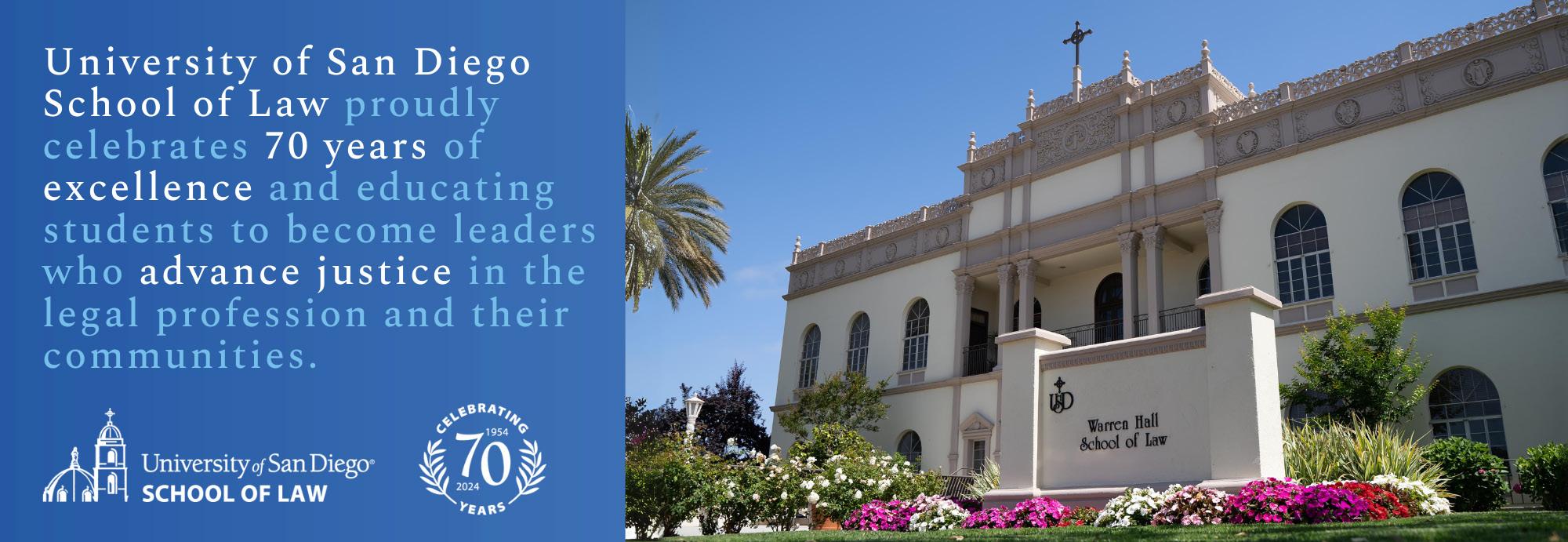
SAN DIEGO LAWYER | May / June 2024 41
THE 2024 DISTINGUISHED LAWYER
MEMORIAL INDUCTEES
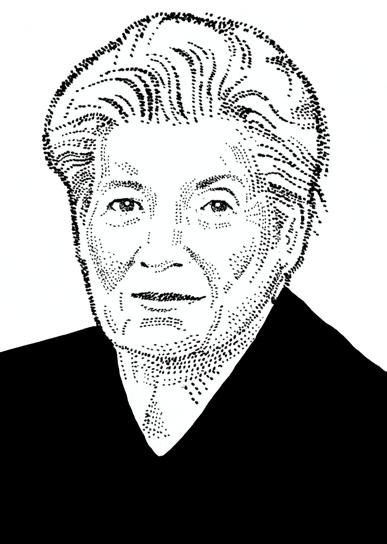

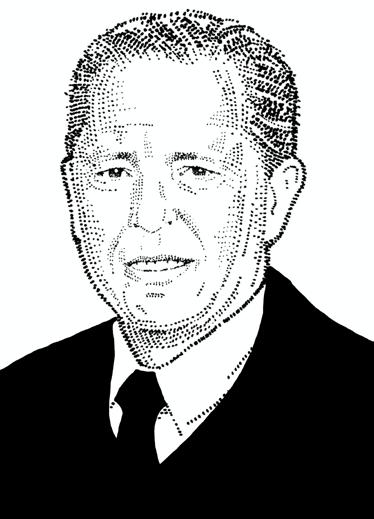
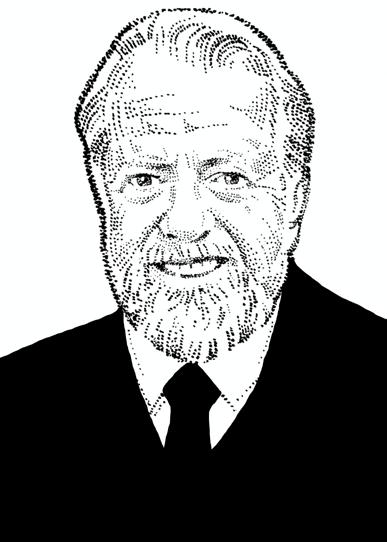

Thank you to those who joined us at the Distinguished Lawyer Memorial Reception to celebrate the lives and careers of the 2024 Inductees. To honor these distinguished individuals, please consider a taxdeductible contribution to the San Diego County Bar Foundation, which supports more than 70 law-related organizations in San Diego County.
In 2023, SDCBF awarded $390,000 to 25 nonprofit organizations, providing access to justice (through legal services and education) to those individuals most impacted by poverty, abuse, and discrimination throughout San Diego County.
To see photos from our 2024 reception, please visit sdcbf.org/2024-dlm-photos.
To make a contribution in honor of a past or present honoree or to make a general donation to the Foundation, please visit: sdcbf.org/donatedlm

619-231-7015 | info@sdcbf.org | SDCBF.org PLEASE
DLM
DONATE IN HONOR OF A PAST OR PRESENT
HONOREE.
Betty E. Boone
Stephen G. Cline
Gregory E. Knoll
M.Howard Wayne
Ellen H. Whelan
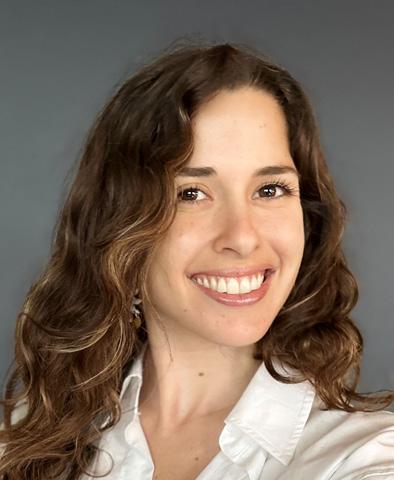
What are your main responsibilities at the Bar?
I lead the SDCBA’s communications calendar and help drive the development of all marketing content for our events, programs, and external partners. My background in design also allows me to help create graphics and ideate new ways to improve our website’s user experiences.
How long have you been working at the Bar?
For about eight months, since October 2023.
What is your favorite part of your job?
My favorite part about this position is being surrounded by talented minds and using my organizational skills to help streamline internal workflow for our awesome marketing team.
Nicole Behar Marketing Communications Manager
What is your favorite movie and why?
My favorite movie is “Sixteen Candles” because I love the ’80s and Jake Ryan.
What’s your favorite quote?
“You are the universe, expressing itself as a human for a little while.” — Eckhart Tolle
What do you love about San Diego?
I love the diversity of cultures, being able to speak Spanish in many neighborhoods, and the proximity to our beautiful ocean, mountains, and desert.

SAN DIEGO LAWYER | May / June 2024 43
THANK YOU 100% CLUB 2024 2024
The San Diego County Bar Association wants to thank all of the San Diego law firms, public agencies, and nonprofit legal organizations that have provided SDCBA membership to 100% of their attorneys in 2024. Your commitment to the San Diego legal community is greatly appreciated.
100% Club member list as of May 2024
Allen Matkins Leck Gamble Mallory & Natsis LLP
Allen, Semelsberger & Kaelin, LLP
Ames Karanjia LLP
Antonyan Miranda, LLP
Appellate Defenders, Inc.
Astuno Sabel Law PC
Atkinson, Andelson, Loya, Ruud & Romo
Beamer, Lauth, Steinley & Bond, LLP
Beatrice L. Snider, APC
Bender Kurlander Hernandez & Campbell, APC
Best Best & Krieger, LLP
BioMed Realty
Blackmar, Principe & Schmelter APC
Blanchard Krasner & French
Bobbitt, Pinckard & Fields, APC
Brierton Jones & Jones, LLP
Buchanan Ingersoll & Rooney PC
Burton Kelley, LLP
Butterfield Schechter LLP
Case Harvey Fedor
Casey Gerry
Chalifoux, Brast, Thompson & Potocki APC
Christensen & Spath LLP
Cohelan Khoury & Singer
Dean Gazzo Roistacher LLP
Devaney Pate Morris & Cameron, LLP
Dietz, Gilmor & Chazen, APC
District Attorney’s Office of San Diego
Donald R. Holben & Associates, APC
Duckor Metzger & Wynne ALC
Fennemore
Ferris & Britton, APC
Fitzgerald Knaier LLP
Flanagan Law, APC
Fleischer & Ravreby
Gatzke Dillon & Ballance LLP
Genesis Family Law, APC
Goodwin Brown Gross & Lovelace LLP
Green Bryant & French, LLP
Greene & Roberts LLP
Grimm, Vranjes Greer Stephan & Bridgman LLP
Gruenberg Law
Hahn Loeser & Parks, LLP
Henderson, Caverly & Pum, LLP
Higgs Fletcher & Mack LLP
Hoffman & Forde
Hooper, Lundy & Bookman, PC
Horton Oberrecht & Kirkpatrick, APC
Hughes & Pizzuto, APC
Jackson Lewis PC
Judkins, Glatt & Rich LLP
Karen D. Wood & Associates
Kennedy & Souza, APC
Klinedinst PC
Koeller Nebeker Carlson & Haluck LLP
Kriger Law Firm
Legal Aid Society of San Diego, Inc.
Lincoln Gustafson & Cercos LLP
Macdonald & Cody, LLP
McCloskey Waring Waisman & Drury LLP
McDougal Boehmer Foley Lyon Mitchell & Erickson
Miller, Monson, Peshel, Polacek & Hoshaw
Mintz Levin
MoginRubin LLP
Moore, Schulman & Moore, APC
Musick, Peeler & Garrett LLP
Neil, Dymott & Hudson, APLC
Niddrie | Addams | Fuller | Singh LLP
Noonan Lance Boyer & Banach LLP
Office of the Carlsbad City Attorney
Office of the Public Defender
Office of the San Diego City Attorney
Pettit Kohn Ingrassia Lutz & Dolin PC
Pillsbury Winthrop Shaw Pittman LLP
Preovolos Lewin, ALC
Procopio, Cory, Hargreaves & Savitch LLP
Quarles
San Diego County Counsel
San Diego Unified Port District
Schor Vogelzang & Chung LLP
Schwartz Semerdjian Cauley Schena & Bush LLP
Seltzer|Caplan|McMahon|Vitek ALC
Sheppard, Mullin, Richter & Hampton LLP
Shustak Reynolds & Partners, PC
Siegel, Moreno & Settler, APC
Solomon Minton Cardinal Doyle & Smith LLP
Solomon Ward Seidenwurm & Smith, LLP
Stokes Wagner, ALC
Sullivan, McGibbons, Crickard & Associates, LLP
Thorsnes Bartolotta McGuire LLP
Tresp, Day & Associates, Inc.
Walsh McKean Furcolo LLP
Webb Law Group, APC
Wilson Turner Kosmo LLP
Winet Patrick Gayer Creighton & Hanes ALC
Wirtz Law APC
Witham Mahoney & Abbott, LLP
Withers Bergman LLP
Wright, L'Estrange & Ergastolo
44 SAN DIEGO LAWYER | May / June 2024
PASSINGS

Former San Diego County Judicial Officer Anthony “Tony” Brandenburg has passed away. He was appointed Commissioner to the San Diego County Municipal Court in 1989, and was elevated to the Superior Court in 1998. He worked toward improving the legal standing and quality of life of Native Americans. He presided over cases for eleven local tribes, and provided court services to other tribes throughout California. Brandenburg leaves behind his wife Cindy, children, grandchildren, and many friends. He will be missed.


THANK YOU TO OUR EXCLUSIVE HOST EVENT SPONSOR:


THANK YOU TO OUR SPONSORS de Castro, P.C. Attorneys & Counselors
SPONSOR
PRODUCING SPONSOR
PRESIDING
2024 SAN DIEGO COUNTY BAR ASSOCIATION PRESIDENTIAL
2024 SAN DIEGO COUNTY BAR ASSOCIATION
SPONSOR
SAN DIEGO LAWYER | May / June 2024 45
MIXING IT UP - ANNUAL SPRING CELEBRATION OF DIVERSITY
Thank you to everyone who joined us at Mixing it Up, SDCBA's Annual Spring Mixer produced by the Diversity, Equity, and Inclusion Division of SDCBA. Taneashia Morrell, DEI Division Chair, delivered welcoming remarks highlighting the DEI Division's initiatives for 2024. The SDCBA is honored to celebrate the diversity that makes our legal community stronger.
Special thanks to exclusive host event sponsor Higgs, Fletcher & Mack.

ANNUAL JUDICIAL RECEPTION
Thank you to everyone who joined us at our 2024 Judicial Reception! We had a great turnout and were excited to celebrate our newest San Diego judicial officers.
Special thanks to Presidential Sponsor de Castro P.C. Presiding Sponsor Judicate West, and Producing sponsor JAMS.
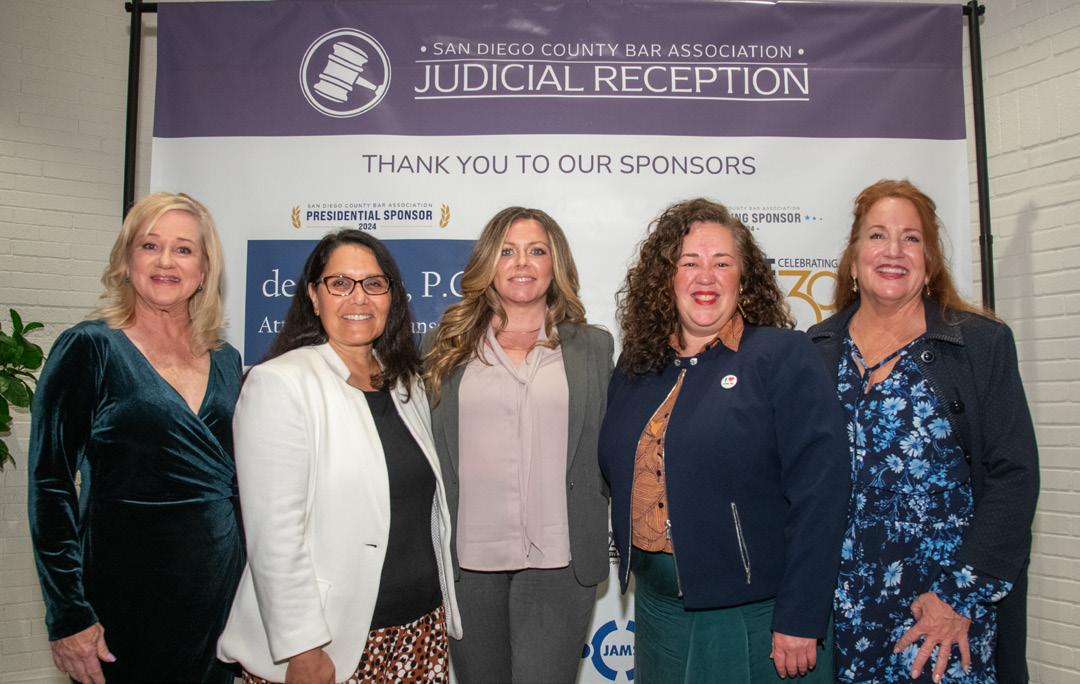




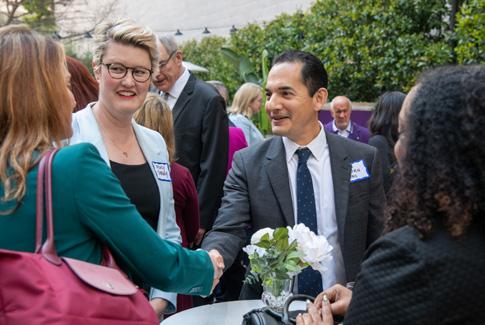
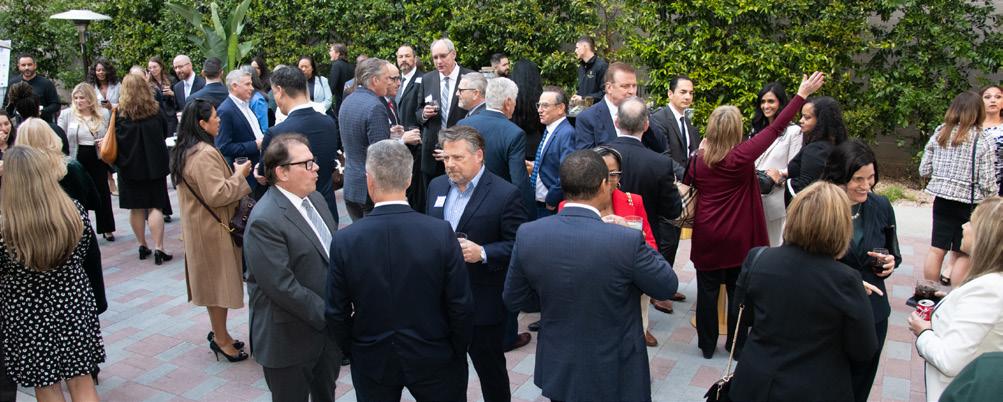
PHOTO GALLERY
L to R: Gail King, Crystal Trull, Joanne Franciscus, Lorena Slomanson, Debbie Rider
Hon. Dwane Moring, Patricia Taitano-Valdovinos
L to R: Michael O'Halloran, Hon. Margaret Mann (Ret), Hon. John Scherling
L to R: Stacy Dooley, John Pro
46 SAN DIEGO LAWYER | May / June 2024
Left: Taneashia Morrell, DEI Division Chair, Right: 2024 SDCBA President Stacey Kartchner
EXCLUSIVE MEMBER BENEFITS
All information shown is as of May 2024, and subject to change without notice.



LISTSERVS TO CONNECT YOU WITH FELLOW MEMBERS
Online community connecting you to colleagues in 27 practice area sections.
TECH & LAW PRACTICE CONSULTING
Level up your law practice management with online expert help from our resident Technology and Practice Management Advisor!
ACCESS TO THE ONLINE MEMBER DIRECTORY
Look up any of your fellow SDCBA members in our comprehensive directory — available only to members.



BUSINESS SERVICES
CUSTOM-CRAFTED EXPERT CLE!
Choose from a wide selection of timely CLE content spanning the gamut of topics, designed to best help you fulfill your CLE requirements. Visit www.sdcba.org/cle-center.
EXCLUSIVE FREE BANKING BENEFITS
Remote deposit service, interest-bearing personal checking, no-first-year-fee commercial credit card & business line of credit.

SAVE UP TO 40% ON SHIPPING
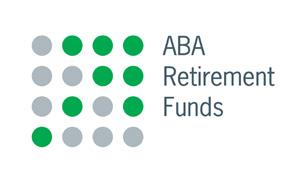

Previously Office Depot Business Solutions Division

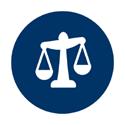

20% DISCOUNT ON SELECT CAREER CENTER JOB POSTING PACKAGES
LEGAL ETHICS HOTLINE
Call for guidance and perspective on a variety of ethical considerations in the practice of law. (619) 231-0781 x4145
FREE! NOTARY SERVICE
Schedule your free notary appointment with one of our notaries at the SDCBA Downtown Bar Center.

UNLIMITED CLE ALL YEAR FOR JUST $150!
Get your All-Access CLE pass when you join the SDCBA, or purchase at any time from your Member Profile.
TAKE 10% OFF OFFICE PRODUCTS
Enjoy savings on more than 30,000 office supplies.

SAVE UP TO 25% ON CAR RENTALS
PRACTICE MANAGEMENT GET MORE CLIENT REFERRALS IN SAN DIEGO &
® COMPETITIVE FEES, GREAT RANGE OF FUNDS
One of the leading providers among bars nationwide.
SAVE 10% ON YOUR FIRST THREE OUTSOURCED PROJECTS!
Outsource legal work to freelance lawyers. Increase profitability, efficiency, and flexibility!
SAVE 10% ON PRACTICE MANAGEMENT
Clio's legal practice management and client intake software simplifies running your law firm.

10% LIFETIME DISCOUNT
Work faster and bill more time with this productivity suite for Clio users.

TRUST ACCOUNT MANAGEMENT
SOFTWARE DISCOUNTS
TrustBooks software for small law firms helps you easily manage your trust account. First 3 months free on “DIY” plan, $15 off per month on “TEAM” plan.



SAVE UP TO 30% ON PC PRODUCTS
FIRST THREE MONTHS FREE
Sign up today and save a bundle on the go-to payment solution for your law practice.
SAVE 7%, PLUS NO SETUP FEE
Cultivate great relationships with Ruby’s live virtual receptionist service. Ruby will answer, transfer, take messages, and delight every caller for you!
LEGAL DOCUMENT
AUTOMATION SOFTWARE
10% off the 1st-year subscription for new users.
HIRE VIRTUAL ASSISTANTS FROM LATIN AMERICA AND LET THEM TAKE CARE OF YOUR TO-DO LIST!
DIGITAL MARKETING PACKAGES TAILORED FOR YOUR LAW FIRM.
Receive 25% off digital packages and two complimentary months of social media management.
sdcba.org/memberdiscounts
AN AFFINI PAY SOLUTION
2024 PARTNER
FREE BAR BENEFITS! EDUCATION
IMPERIAL COUNTIES! The SDCBA’s Lawyer Referral and Information Service (LRIS) referred over 60,000 clients to participating lawyers in 2023, resulting in almost $8 million in legal fees earned. Learn more about joining LRIS
www.sdcba.org/joinlris.
AW YER REFERRAL & INFORMATION SERVICE
at
L

Find Your next e xpert
for an expert who is qualified to give legal testimony or offer consultation, litigation, or dispute resolution services? Visit the SDCBA’s brand new online directory to find your next expert. Our online search makes it simple to identify providers with the right expertise for your needs. www.Firststopexperts.com/sdcba
Looking










































 Jenn French is a partner at Lynch Carpenter, LLP and a member of the San Diego Lawyer Magazine Editorial Committee.
Jenn French is a partner at Lynch Carpenter, LLP and a member of the San Diego Lawyer Magazine Editorial Committee.








 TRACY PRIOR Chief Deputy District Attorney San Diego County District Attorneyʼs Office
TRACY PRIOR Chief Deputy District Attorney San Diego County District Attorneyʼs Office
 DAVID MAJCHRZAK Deputy General Counsel - Shareholder Klinedinst PC SERVICE TO THE LEGAL COMMUNITY AWARD
DAVID MAJCHRZAK Deputy General Counsel - Shareholder Klinedinst PC SERVICE TO THE LEGAL COMMUNITY AWARD





















































































